



Tesla’s números de vendas agitados colocaram a empresa mais perto do vermelho do que em anos, de acordo com Resultados financeiros divulgado terça -feira, ameaçando uma de suas maiores vantagens sobre outros jogadores de veículos elétricos.
A montadora elétrica reportou US $ 409 milhões em lucro líquido em US $ 19,3 bilhões em receita depois de fornecer quase 337.000 EVs no primeiro trimestre do ano. O lucro líquido da empresa reflete uma queda de 71% em relação ao mesmo trimestre do ano passado.
Foi o pior trimestre para as entregas da Tesla em mais de dois anos e apareceu logo após o primeiro queda ano a ano em vendas. A renda da Tesla foi tamponada pela venda de US $ 595 milhões em créditos fiscais de emissões zero, de acordo com seu relatório de ganhos-sem esses, teria apresentado uma perda.
E, no entanto, as ações da Tesla subiram nas negociações após o horário comercial, pois os investidores colocam mais peso nos planos da empresa de iniciar a produção em um VE acessível em junho e os comentários do CEO Elon Musk durante uma chamada de ganhos de que ele reduziria seu papel no Departamento de Eficiência do Governo para concentrar mais atenção no Tesla. Musk não se comprometeu a acabar com seu trabalho de doge, notando Ele pode continuar Em alguma capacidade, através do restante do segundo mandato do presidente Donald Trump.
TechCrunch publicou um resumo de outros comentários de almíscar cobrindo tarifas, robotaxia, IA e EVs, durante a chamada de ganhos de Tesla.
A Tesla também alertou os acionistas sobre como a guerra comercial pode afetar seus negócios avançando. A empresa disse que as tarifas do presidente Trump e a “mudança de sentimento político” podem ter um “impacto significativo na demanda por nossos produtos”.
A empresa observou que as tarifas atuais, cuja maior parte são direcionadas à China, terão “um impacto relativamente maior em nosso negócio de energia em comparação com o automotivo”. A Tesla disse que está tomando ações para estabilizar os negócios a médio a longo prazo e se concentrar em manter sua saúde, mas também alertou os investidores que não podem dizer se será capaz de aumentar as vendas este ano.
A Tesla está cumprindo seus planos ambiciosos (mas misteriosos) em torno de fazer modelos mais acessíveis, afirmando que permanece no caminho certo para o início da produção desses veículos na primeira metade de 2025. Durante a chamada de ganhos, Musk era mais específico, afirmando que a produção começaria em junho.
Esses veículos usarão aspectos de uma plataforma de próxima geração que alimenta o Robotaxi, mas confiará em sua existente que alimenta o Modelo Y e o Modelo 3, disse a empresa em sua carta de seus acionistas. Como tal, esses veículos mais baratos serão produzidos nas mesmas linhas de fabricação que a linha atual de veículos, disse a empresa.
Isso entra em face de um relatório da Reuters da semana passada que alegou que o primeiro desses novos EVs é atrasado por meses.
As vendas da Tesla enfrentam vários ventos contrários.
A programação de EV da empresa está envelhecendo (embora os sedãs e os SUVs tenham agora todos os que se elevam) e seu mais novo produto, o Cybertruck, não está nem perto do sucesso que o CEO Elon Musk achou que poderia ser. E a política de extrema direita de Musk, juntamente com seu envolvimento no governo Trump, criou uma reação considerável para a marca de Tesla.
Ao mesmo tempo, Musk orientou a empresa a seus projetos de robô Robotaxi e Optimus.
Ele prometeu lançar uma versão inicial do serviço Robotaxi em Austin em junho deste ano, com outras cidades potencialmente chegando até o final deste ano, mas tem sido leve sobre detalhes sobre como funcionará.
Musk ainda não demonstrou que Teslas é capaz de se dirigir sem intervenção humana, apesar de anos de fazer essa promessa. Além disso, as informações relataram recentemente que uma análise interna realizada na Tesla mostrou que o programa Robotaxi perderia dinheiro por um longo período de tempo Mesmo que fosse trabalhar.
Nesta época do ano passado, Tesla estava lutando com alguns números sombrios. Caso você tenha esquecido, os lucros da empresa caíram 55%, para US $ 1,13 bilhão no primeiro trimestre de 2024 a partir do mesmo período em 2023. A Tesla disse que foi devido a uma prolongada estratégia de corte de preços de EV e “vários desafios imprevistos” cortados nos resultados da montadora.
Tesla tentou mudar esse lucro, mas enfrentou pressão contínua. No segundo trimestre de 2024, a Tesla registrou US $ 1,5 bilhão em lucro, queda de 45% em relação ao mesmo período em 2023. Os lucros foram atingidos por uma taxa de reestruturação de US $ 622 milhões. Embora valha a pena notar, esse lucro foi preenchido por um recorde de US $ 890 milhões em vendas de crédito regulamentar.
Este artigo publicou originalmente às 13:15 pt. Desde então, ele foi atualizado com comentários de Elon Musk e outros executivos da chamada de ganhos.


At this point, there are very few people on the planet who don’t know the word Google. The company’s web search product is part of daily life now for billions of people, with even the term “Google it” becoming something we say regularly.
While lots of people know all about the company’s web presence, the hardware products the company offers might confuse some. Between its line of Pixel smartphones, its smart home offerings under its Nest branding, and its latest entries in the audio space, there’s a lot to parse through. This article should help clear up any confusion!
Below, you’ll find all the info you need on the current state of Google hardware. We also include a quick primer on each type of product the company offers, giving special consideration to its Pixel phones (this is Android Authority, after all).
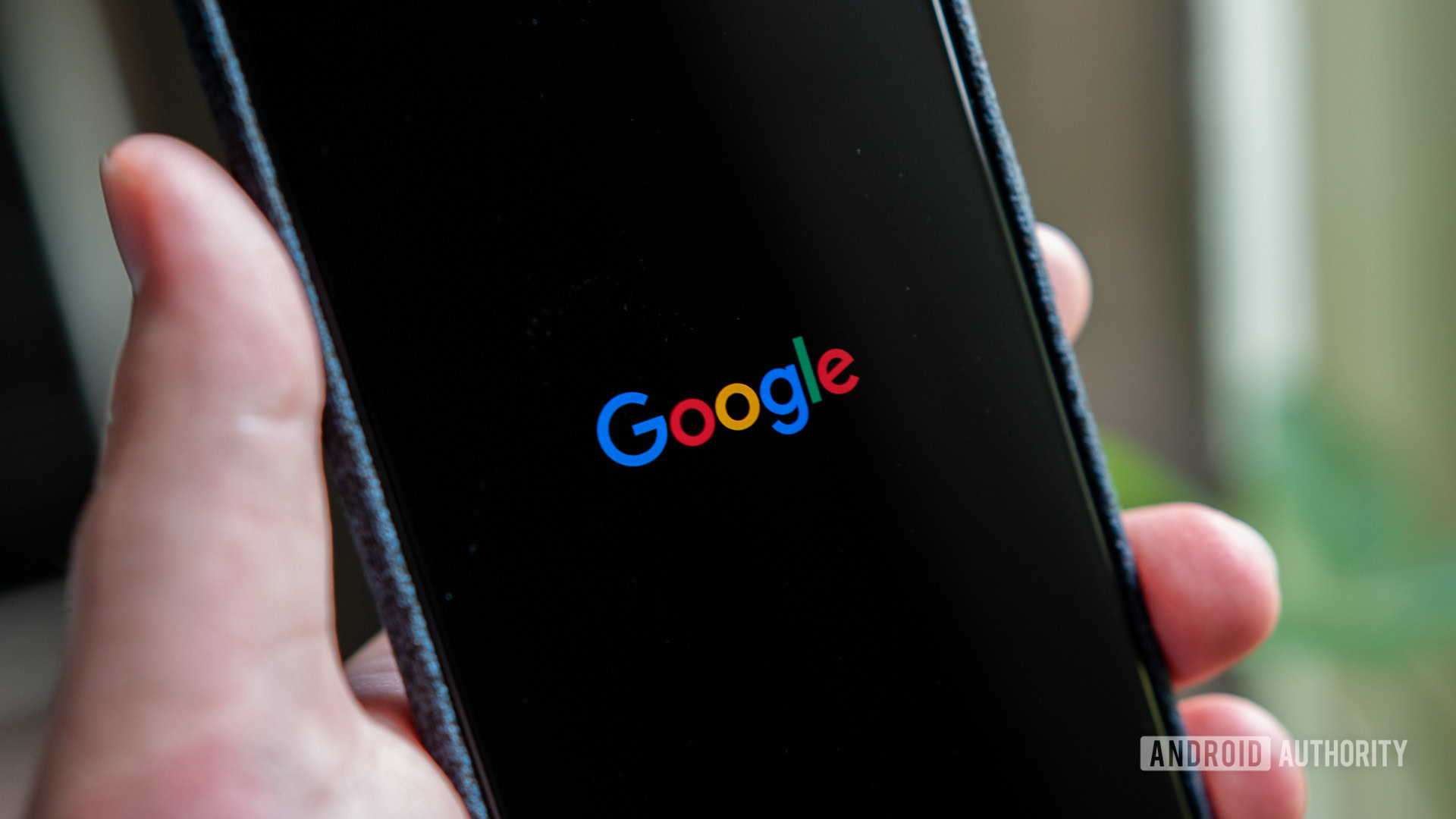
Simply put, Google is one of the biggest and most successful companies in the history of humanity. Starting in 1998, co-founders Larry Page and Sergey Brin rolled out the Google search engine, a simple way to find things on the internet. It was an immediate sensation.
Over time, the company pushed out more software-based services. These include the world’s most popular email platform, Gmail; Google Calendar, the gold standard for online scheduling; Google Maps, which is used by a billion people every month; and Google AdSense, the advertising platform that earns the company the bulk of its revenue.
It wouldn’t be until 2010, though, that Google would roll out its first official hardware product: the Nexus One, an Android-powered smartphone. Co-created with HTC, the Nexus One represented the company’s first big push into the mobile world.
Lots of Nexus-branded phones and tablets would follow, each co-created by Google and another company. It wouldn’t be until 2016, believe it or not, that the company would push out its first bonafide smartphone that it designed and produced itself. This would be known as the Google Pixel, the first entry in the Pixel phone line that still runs today.
Google has produced smartphones for over a decade, but it has many other hardware products as well.
The company has also created laptops that run on its Chrome OS platform, controllers for its cloud gaming service Stadia, home Wi-Fi routers, and media streaming devices. It’s also created a variety of smart home products that now exist under the Nest branding (Nest being a company that Google acquired in 2014 for $3.2 billion).
Although Google will likely always be thought of as a search engine first, its hardware offerings are becoming more popular than ever.

There are a few different categories of Google’s hardware offerings. We’ve broken them down for you below and included descriptions of the latest-and-greatest products within each category. In the next section down, you’ll find a separate listing focused solely on the company’s smartphones.
One thing Google is known for is entering industries with gusto and then exiting shortly thereafter. As such, we are ignoring product categories from the company that are no longer active, such as Daydream (its one and only virtual reality product) and Clips (its short-lived standalone camera device).
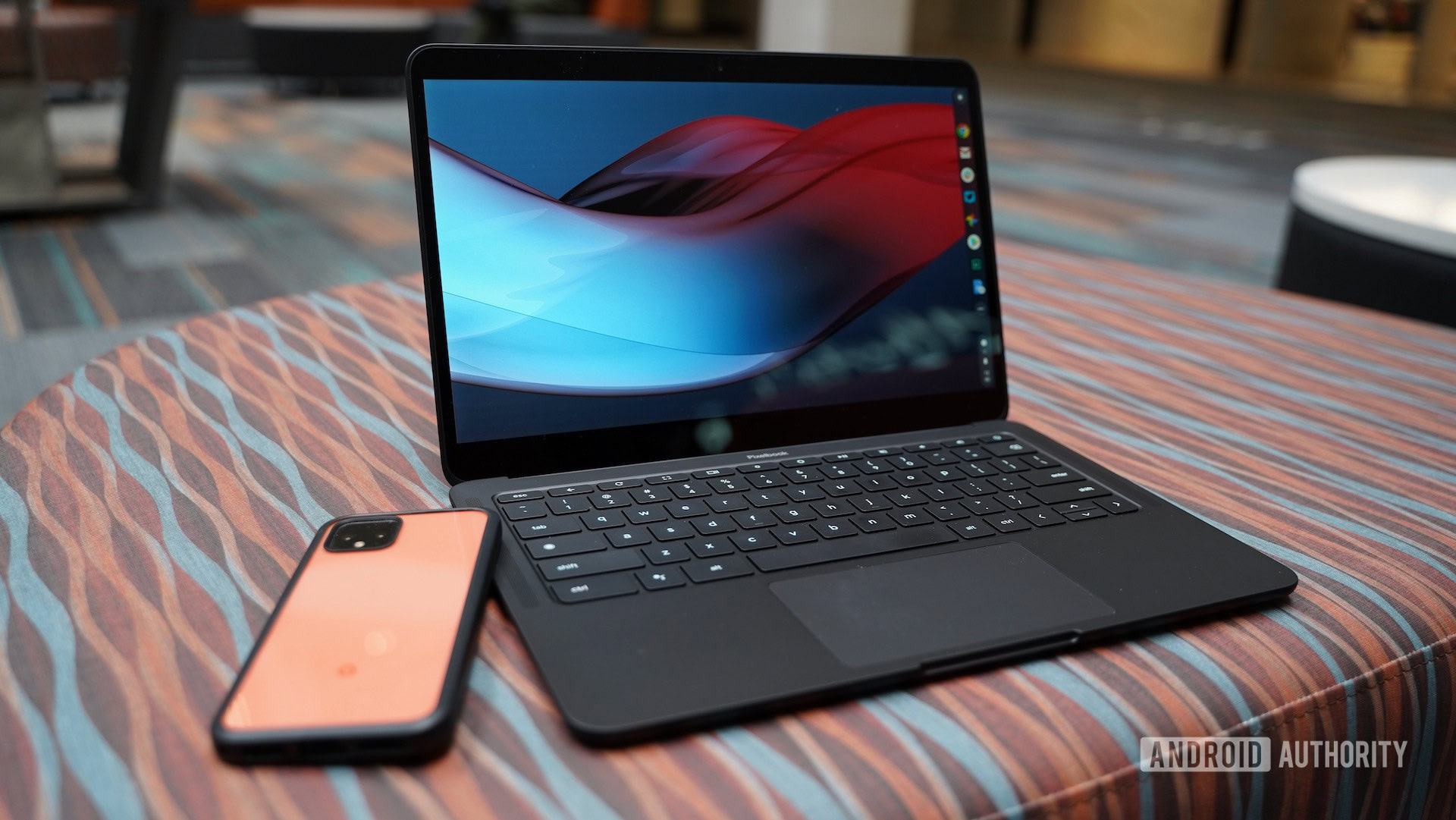
Eric Zeman / Android Authority
Google has released several different laptops and tablets over the years. These devices always run one of the two Google-owned operating systems: Android and Chrome OS. The company has never made a Windows, iOS, or macOS product.
Google’s most recent laptop is the Pixelbook Go from 2019. This iteration of the Pixelbook from 2017 is smaller and cheaper while coming in two new colors: Just Black and Not Pink. Although we suspect there will eventually be a Pixelbook 2, we have no confirmation of when we might see that launch.
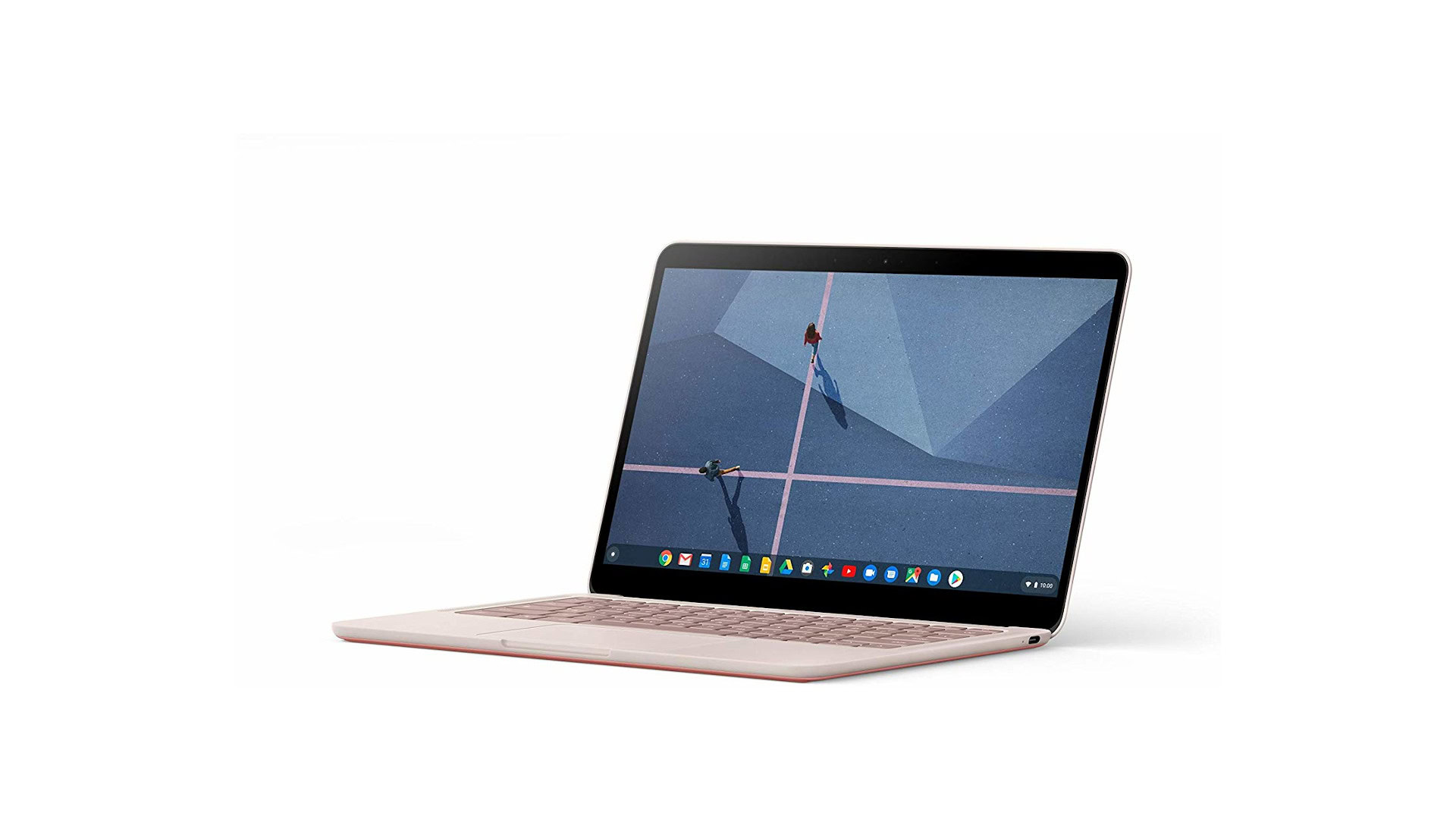
Google Pixelbook Go
Pink is the new black.
The Google Pixelbook Go is a less-expensive Chromebook from Google, though it still costs more than most other Chromebooks in the market. If you value design and performance over value, then you find plenty to like here. And it’s available in (Not) Pink now!
The most recent tablet in the family is the Pixel Slate. Similar to the line of Microsoft Surface 2-in-1 PCs, the Pixel Slate is a Chrome OS-powered tablet that is designed to act as a laptop when connected to the optional keyboard. Unfortunately, Google subsequently exited the tablet market entirely, so the Pixel Slate is expected to be the first and last of its kind.
It has been nearly five years since Google released an Android-powered tablet, but in 2023, the company plans to launch such a tablet, using the Tensor processor used in its latest Pixel phones. It’s never launched an Android-powered laptop. However, most recent Chrome OS devices — including the Pixelbook Go and Pixel Slate — support Android applications.

Jimmy Westenberg / Android Authority
Nest Labs started in 2010 and quickly released its first product: a Wi-Fi-connected learning thermostat. It eventually launched smart smoke/CO2 detectors as well as its first home security camera.
Google bought Nest in 2014. Since then, the company has issued updated versions of the company’s original products while also launching a few new ones. Every Nest product is centered on a few main characteristics: Wi-Fi and internet-connection, integration with Google Assistant, and designed exclusively for in-home use.
In 2021, Google launched the Nest Thermostat, a simpler and cheaper version of the Nest Learning Thermostat. It’s the perfect entry point for people just putting together their smart home.

Google Nest Thermostat
A cheaper, better looking thermostat
Google’s new Nest Thermostat is affordable, attractive, and works with 85% of home HVAC systems. It’s not the smartest thermostat you can buy, but it’s probably the best option for those new to the smart home ecosystem.
The most famous Nest products, though, are the ones that Google originally released under its own branding. These would be the Google Nest Mini (aka the Home Mini), which is one of the world’s most popular smart speakers. The Google Nest Hub (aka the Home Hub) is a similar product but features a touchscreen display.
Finally, the company offers a mesh router system called Google Nest Wifi. The latest version of this product incorporates the powers of a Nest Mini in the main base.

Jimmy Westenberg / Android Authority
In 2019, Google announced that it intended to buy Fitbit. That deal closed in January 2021. Although some federal regulators still contend the deal is under review, we are confident the deal is official.
This purchase puts all of Fitbit’s current fitness trackers, smartwatches, and other health-focused tech under Google’s umbrella. This also means future Fitbit launches will heavily incorporate Google — even as far as bringing in the new Wear OS 3 operating system, which is a co-creation between Google, Samsung, and Fitbit.
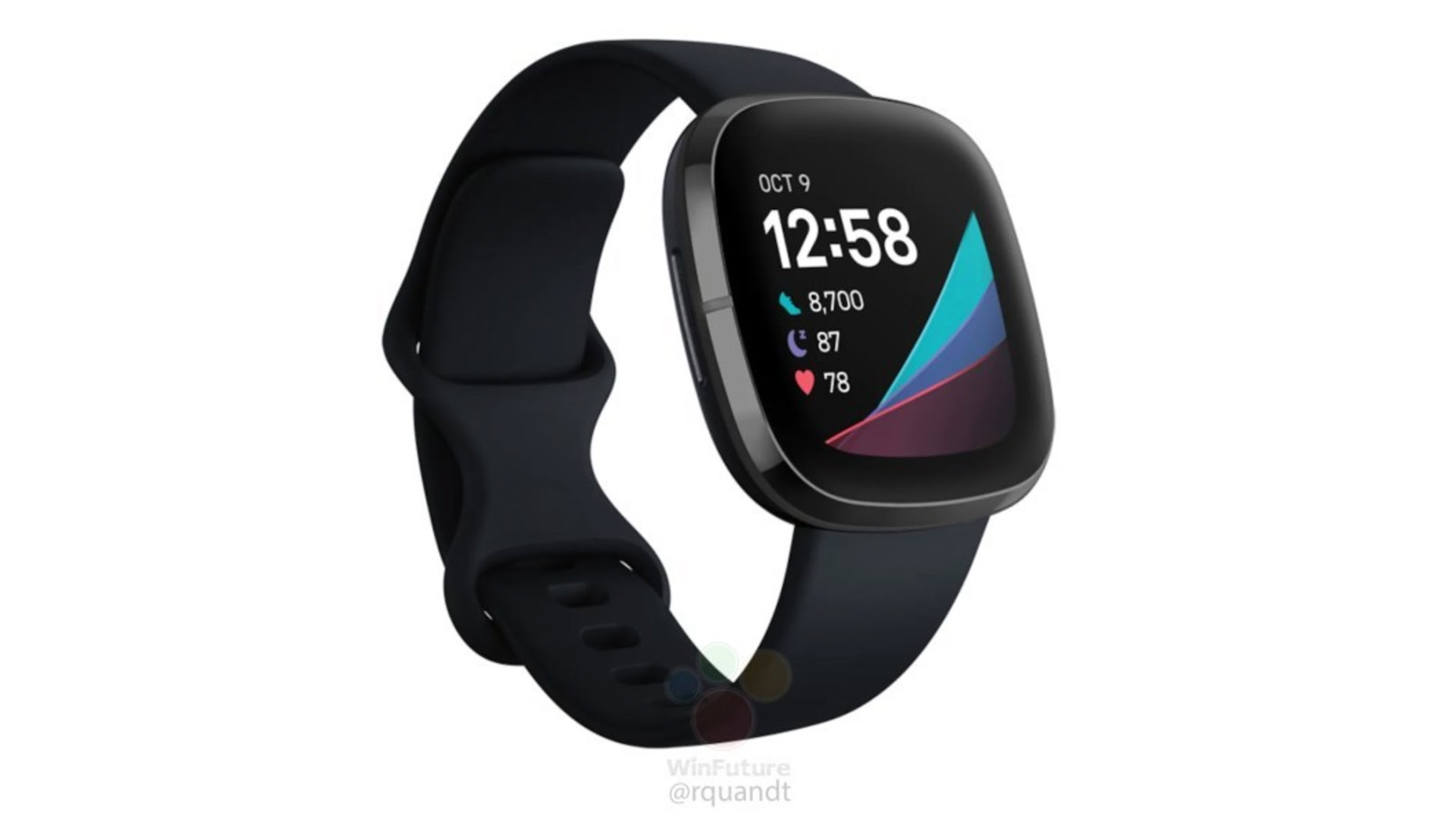
Fitbit Sense
In the meantime, the most recent flagship Fitbit watch is the Fitbit Sense, which ships with Fitbit’s own operating system. However, it does feature lots of Google integration, including Google Assistant voice commands and audible responses.

In May 2022 at Google I/O, the company finally announced its plans to launch its first in-house smartwatch. The Pixel Watch will have a circular design, a otating digital crown, and support for customizable watch bands. It will have Google’s latest Wear OS software installed, along with Fitbit fitness software. It will be released sometime later in 2022 but no price tag has been revealed.

At the end of 2019, Google took the wraps off its very first product designed exclusively for gaming: the Google Stadia controller. The controller is designed to be used with the Stadia gaming service, which allows you to play games on Google’s cloud servers. This eliminates the need for you to own a high-end gaming PC or expensive home console, as you can stream a small selection of titles on your TV, laptop, or even your phone.
Related: What is cloud gaming?
Stadia is designed to work best on a TV with Google’s media streaming device, known as a Chromecast. The Chromecast is a small dongle that connects to an HDMI port on your television. Once connected to your home network, you can “cast” media from your phone, tablet, or laptop to the screen. Early Chromecasts did not have a remote — you needed to control it from a separate device, which in most cases is an Android or iOS smartphone.

Chromecast with Google TV
The latest Chromecast has Android TV built-in…and a remote!
The Chromecast with Google TV is not just a Chromecast. It’s a full-on Android TV streamer with a Google Assistant-powered voice remote!
However, in 2020 Google finally launched a Chromecast device that includes a remote: the Chromecast with Google TV. This device is aimed to directly compete with standalone media streamers, such as those from Roku and Amazon Fire TV. As of the end of June 2021, this device also supports Stadia, although it did not launch with this ability.

Lil Katz / Android Authority
There have been quite a few audio-centric products from Google. We’ve already mentioned the Google Nest Mini smart speaker, but that’s hardly a traditional audio speaker. For better-sounding audio, the company offers the Google Nest Audio. This speaker does everything a Nest Mini does, but offers better sound quality.
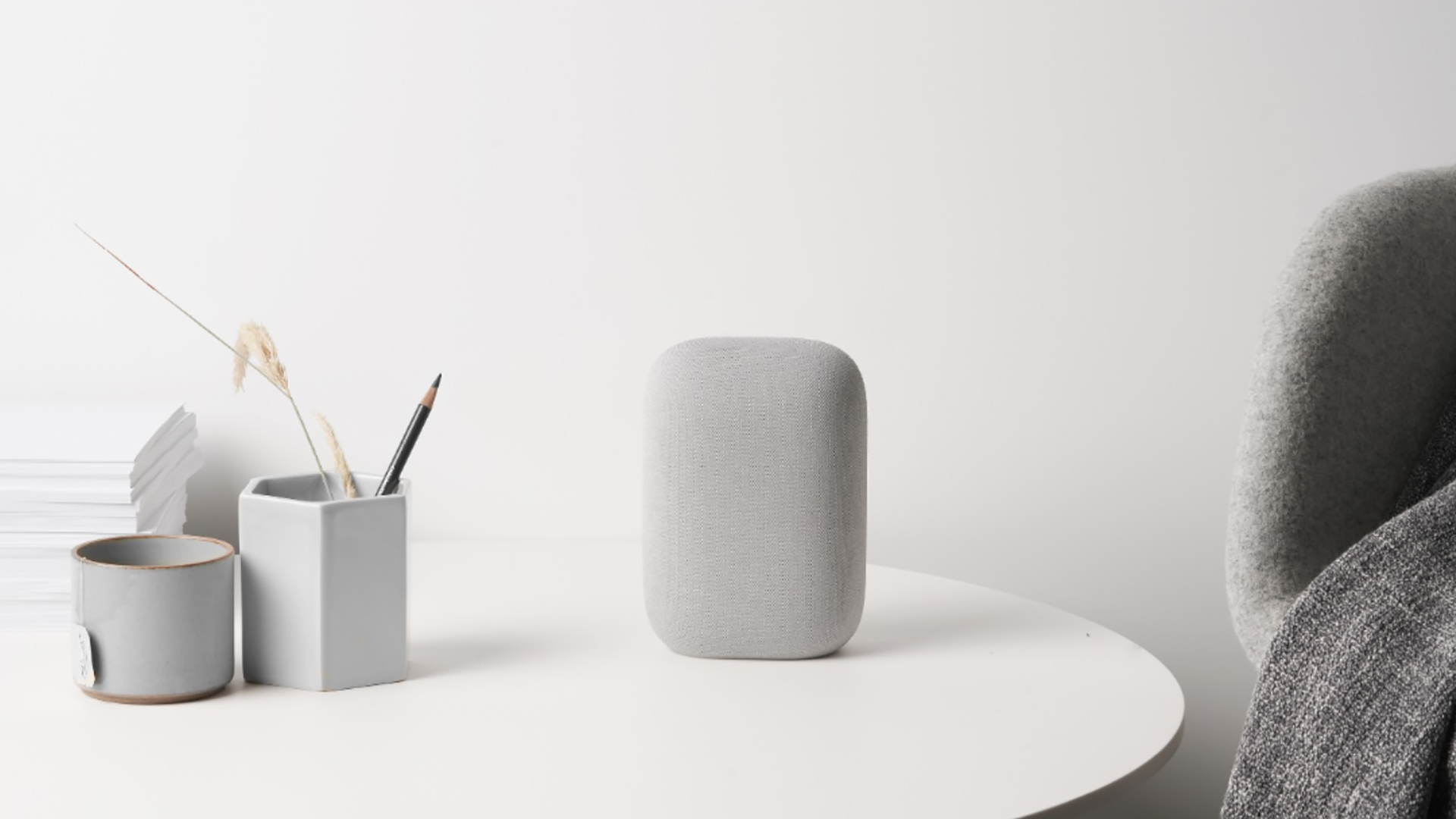
Google Nest Audio
The latest smart speaker from Google’s Nest brand.
Almost like a Google Home 2, this full-sized smart speaker is for the folks who want something that sounds better than a Nest Mini but is less expensive than the Google Home Max.
If you need something more robust than even the Nest Audio, there’s the Google Home Max. This is even larger than the Nest Audio and offers premium sound quality. However, that speaker is quite old and will likely be replaced soon with a Nest-branded alternative.
Google also formerly offered a variant of its Chromecast dongle known as Chromecast Audio. It allowed you to cast audio streams to “dumb” speakers you already own. This was a perfect solution for people who wanted a connected home speaker system but didn’t want one of Google’s speakers. Unfortunately, the company has discontinued Chromecast Audio, although you can still find them if you look hard enough and are willing to pay a premium.

Google Pixel Buds A-Series
Google’s affordable Pixel Buds are all about boosting your productivity. They pack plenty of features and a form factor you know and love. All you have to do is pick a color.
Google also makes wearable audio products, the latest of which is a set of true wireless earbuds called Pixel Buds A. These are a cheaper version of the (now unavailable) second-gen Pixel Buds. These earbud headphones are meant to compete with Apple’s industry-defining AirPods. Unlike AirPods, though, Pixel Buds incorporate Google Assistant heavily, featuring an easy-to-use touch interface and real-time language translation. In June 2022, the company will launch the Pixel Buds Pro wireless earbuds, with more advanced audio hardware, including active noise-cancellation support, for $199.
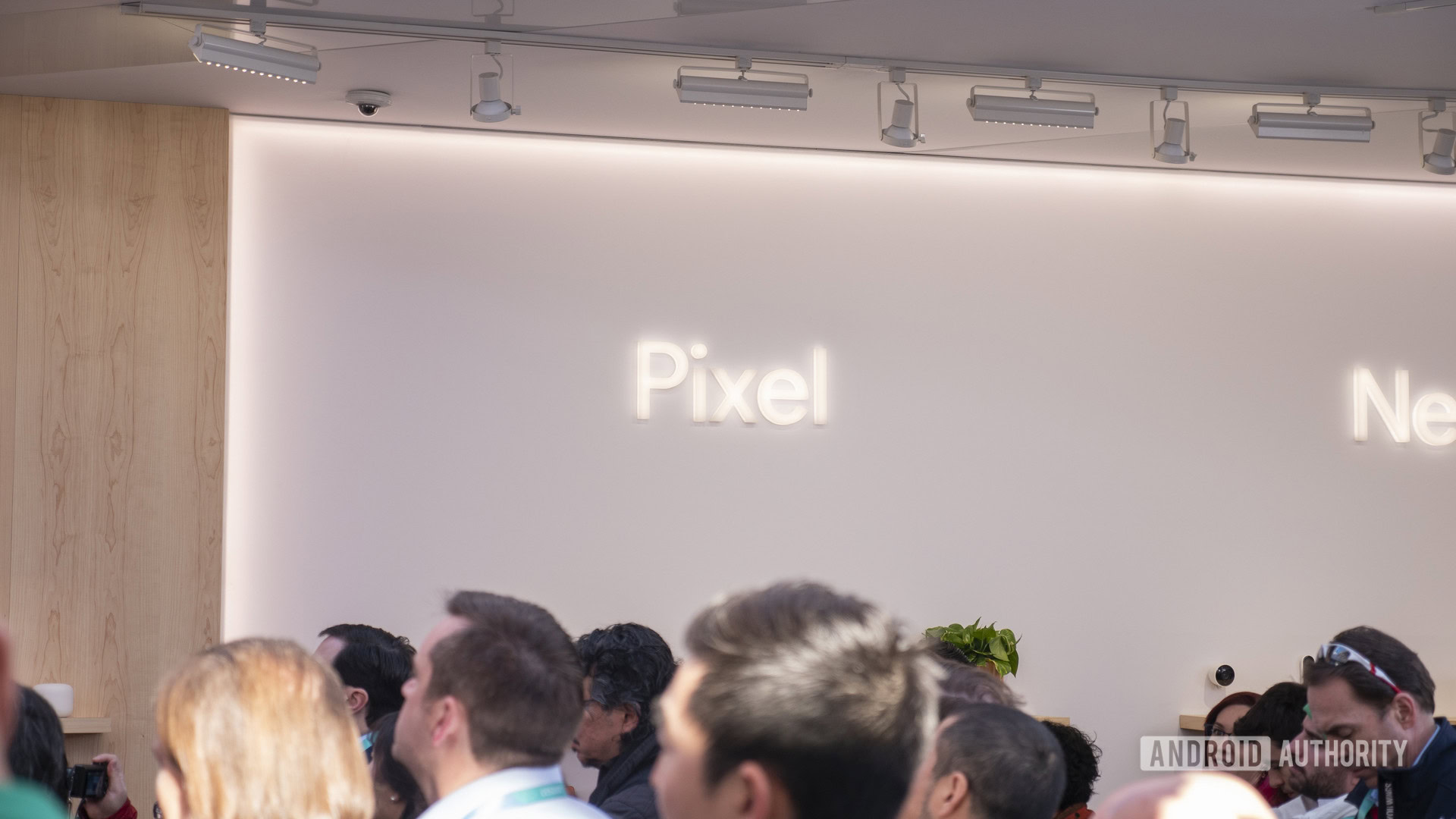
Google’s line of Pixel phones currently come in two varieties: the main numbered series and the “a” series. The numbered series is filled with Google’s flagship smartphones while the “a” series are budget-friendly riffs on the flagship phones with weaker specs and lower prices.
The Pixel line is notable for two major reasons: the camera and Android upgrades. Google’s camera software is some of the best in the industry, and it helps Pixel phones consistently land as one of the best smartphone cameras of each year. Additionally, every phone in the line receives the latest version of Android on the day of its stable launch.
In the past, flagship Pixel phones tended to have lower-grade specs as compared to competitors. Poor battery life was also a consistent complaint across the entire line. However, in 2021, the launch of the Google Pixel 6 series finally changed up Google’s reputation for releasing phones with mediocre hardware.
Here’s the info you need on the two lines.

Robert Triggs / Android Authority
At first, the flagship numbered series of Pixel phones were all Google offered. Each numbered entry would feature two phones: the “vanilla” phone as well as the larger “XL” variant. This started in 2016 with the Pixel and Pixel XL. Each year afterward, Google launched a new entry in the series. However, that trend ended in 2019 with the Google Pixel 4 and Pixel 4 XL.
In 2020, Google only released one “flagship” phone: the Google Pixel 5. This phone didn’t have the flagship smartphone processor of the year (the Qualcomm Snapdragon 865) — it had the mid-range Snapdragon 765 instead. This made it less powerful than other premium smartphones of 2020, but still enabled 5G connections and kept the phone’s price down.
In 2021, Google completely upended the Pixel line by launching the Google Pixel 6 and Pixel 6 Pro. These phones look very different from all other Pixels launched so far. They also finally have modern flagship hardware. Google also kept the pricing for the phones low, which was a real surprise.
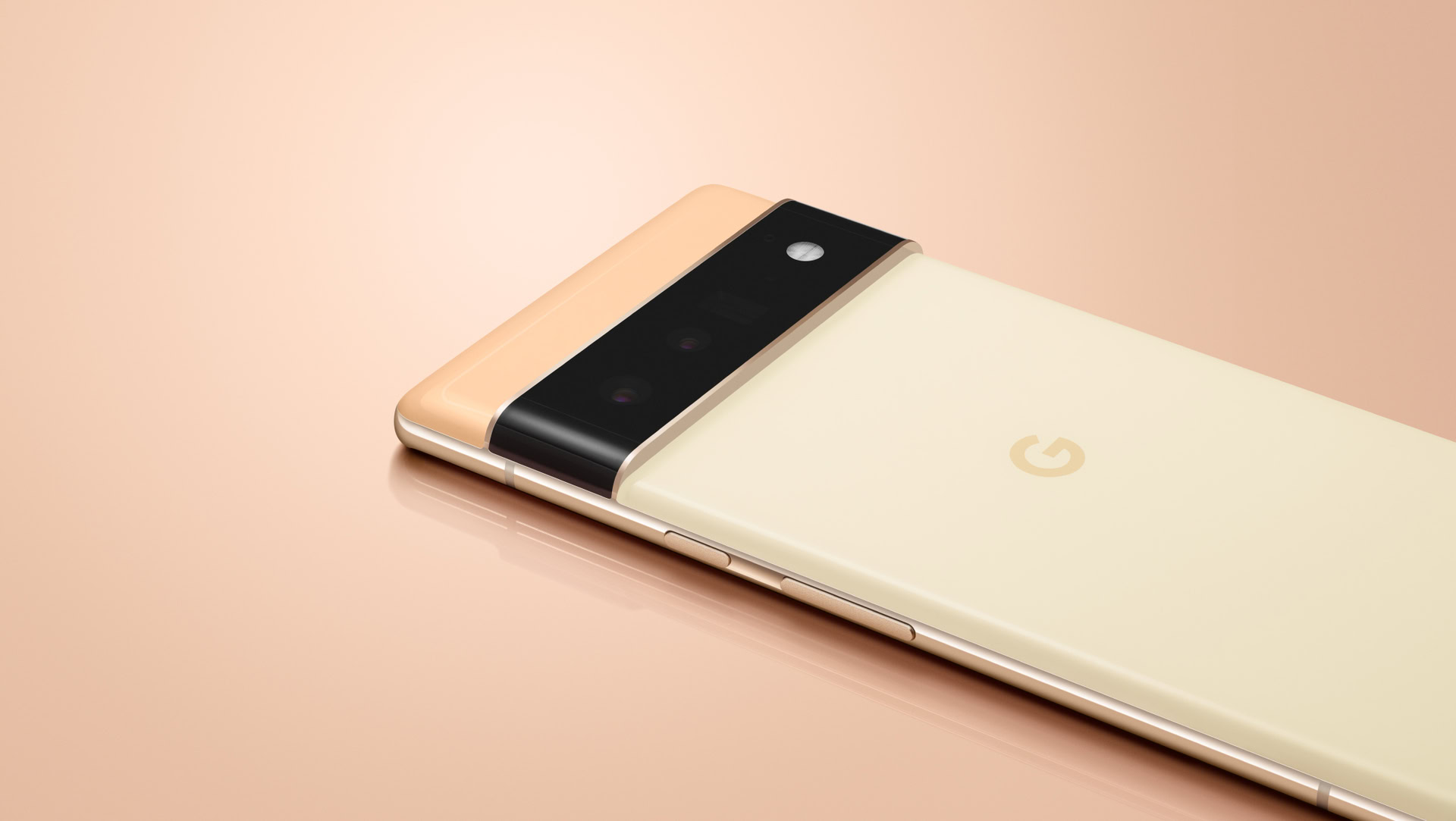
Google Pixel 6 Pro
The Pixel 6 Pro outshines its little brother with a 6.7-inch QHD+ display and 120Hz refresh rate. It has the same two rear cameras as the Pixel 6 but with an additional 4x optical telephoto lens.
The Pixel 6 series is the latest flagship line from Google. However, the company has already revealed plans to launch the Pixel 7 and Pixel 7 Pro sometime in the fall of 2022. They will have the next generation in-house Tensor processor inside, along with Android 13.

Jimmy Westenberg / Android Authority
The first “a” series phone from Google was the Google Pixel 3a from 2019. This phone looked similar to the Pixel 3 from 2018 but cut a lot of corners when it came to specs and design. This allowed the phone to have very similar software and camera experiences as the Pixel 3 but cost half as much.
Google released the second entry in this line with the Google Pixel 4a. Like its predecessor, it looks quite a bit like the Pixel 4 with very similar software and camera experiences. However, this time Google increased the overall specs as compared to the Pixel 3a (better processor, more RAM, more storage, etc.) while simultaneously lowering the price to just $349.
The Pixel 4a became one of the best-reviewed phones of 2020 at Android Authority. A 5G version of the phone — simply called the Pixel 4a 5G — launched later in the year for $499.
In 2021, Google launched the Pixel 5a. This phone is almost exactly the same as the Pixel 4a 5G but with a few extra features, most notably an official IP rating. In June 2022, the company will launch the Pixel 6a, the first in the “a” that will use the Tensor processor that are used in the Pixel 6 series phones. It will launch at the price of $449.
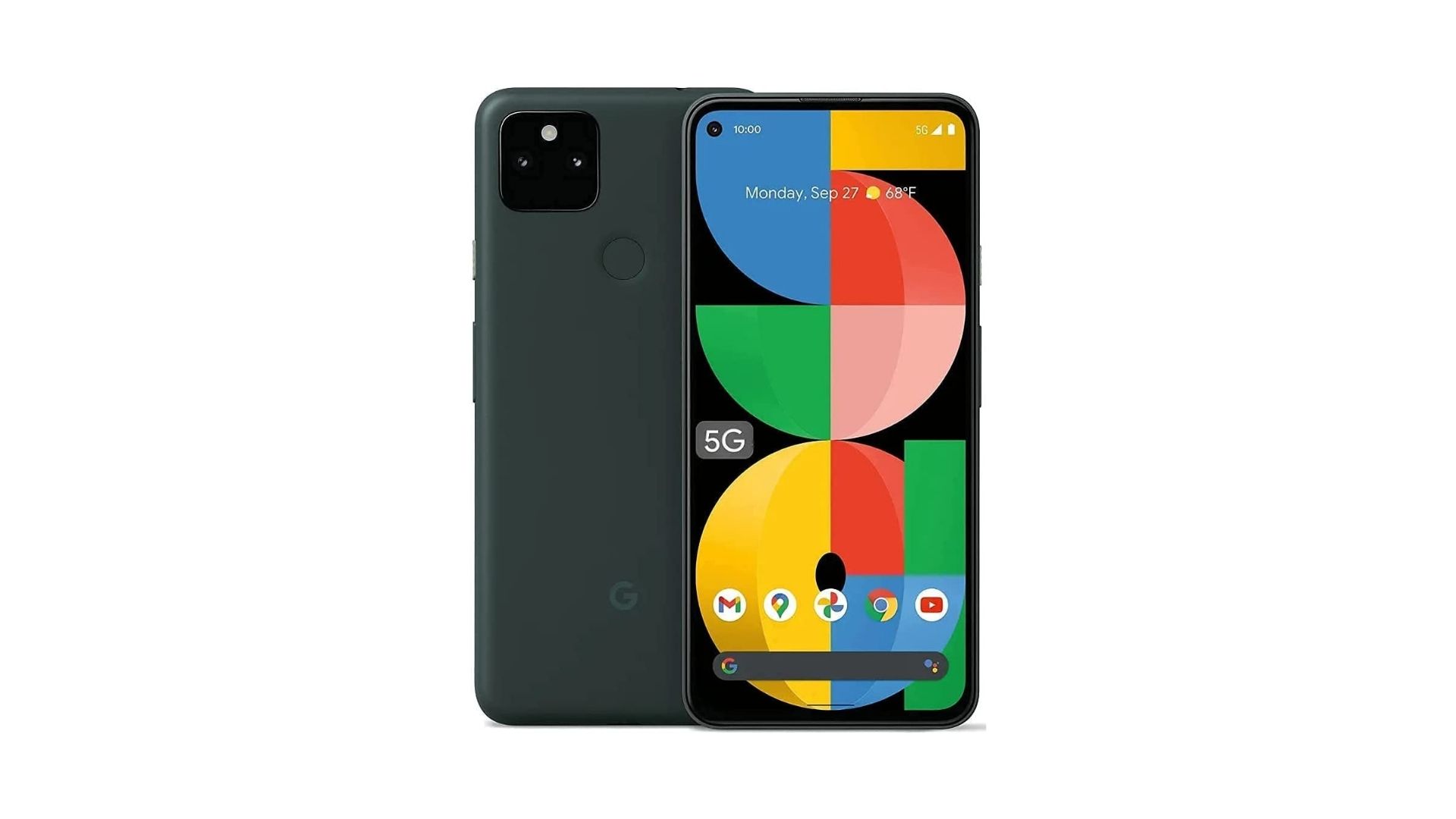
Google Pixel 5a
Water resistance comes to the Pixel A-series
Google’s Pixel 5a offers a few quality-of-life upgrades over its previous devices that may make you want to join Team Pixel. It has a metal unibody design, an IP67 rating for dust and water resistance, and a battery that just won’t quit.
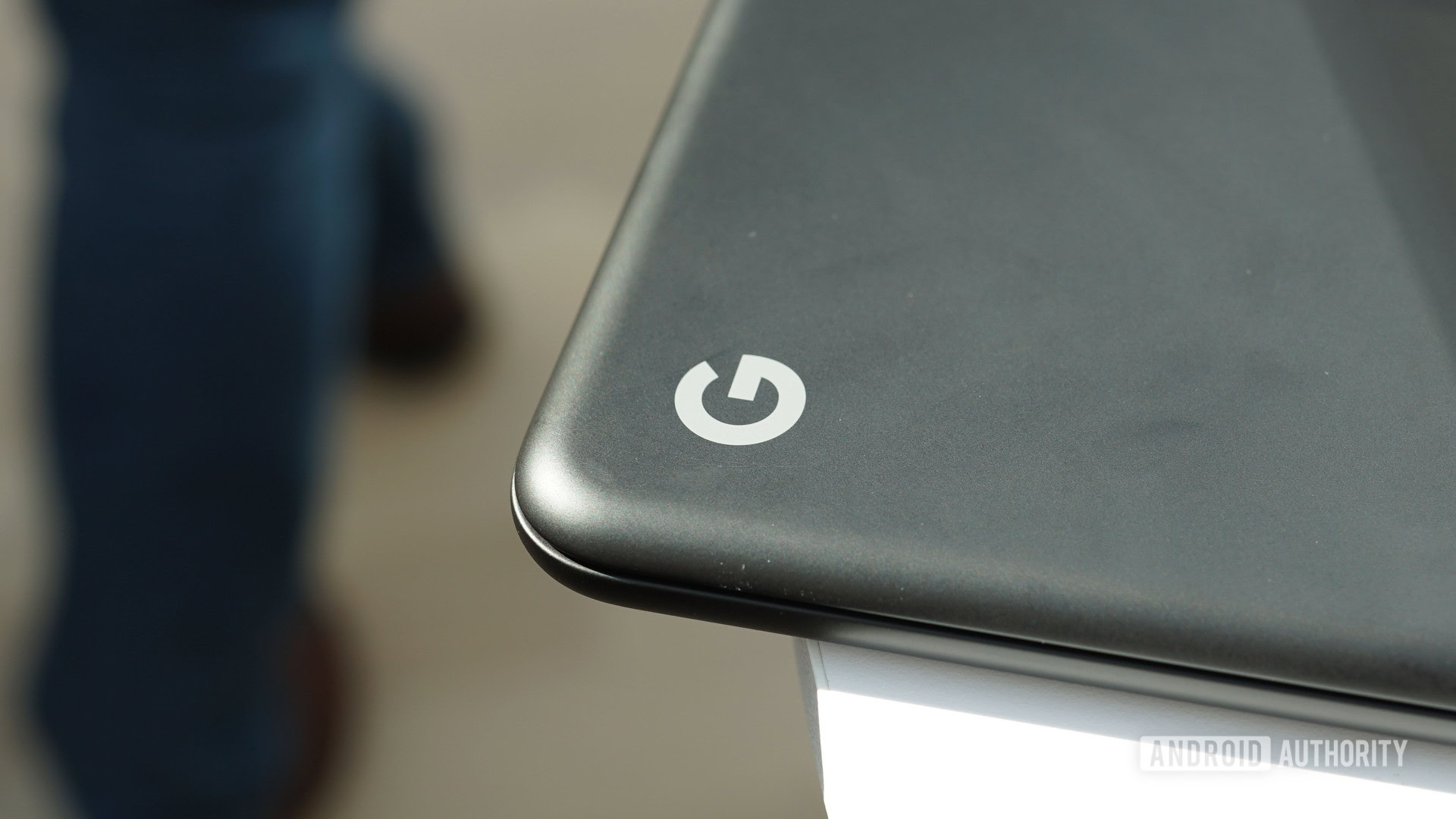
If you’ve used any Google services (and it’s assured everyone reading this has), you already have an idea of what the company’s products “feel” like. That feeling — simplicity, playfulness, and imagination — carries over into the hardware and software designs of all its products. This is something that lots of other companies try to replicate, but Google has mastered.
That being said, there are three specific things that Google incorporates into every hardware product it sells. These are the defining attributes that, when combined, you can’t get from any other brand or product.
Obviously, it makes perfect sense for Google hardware to heavily incorporate its software. For example, when you turn on an Android device for the first time, you enter in your Gmail information. This connects your new phone or tablet to your entire Google life, just like magic.
Related: How to set up a new Google account on your Android device
Google integration could mean making it so all your photos are instantly available on your new smart display, or not needing you to train your new smart speaker on how your voice sounds. This deep connection with the company’s wider ecosystem is a major aspect of why competitor products come up short.
In a way, this is not unlike Apple’s ecosystem, another “addictive” aspect to that company’s products. Once you’re integrated, it’s hard to not be integrated anymore, and this keeps consumers coming back again and again.
Since Google started as a software company, it shouldn’t be surprising to learn that the company approaches nearly every problem from the software side of things. If Google needs to make a smartphone camera better, it doesn’t introduce a new camera sensor — it creates a new algorithm to process photos in better ways. If its Pixel Buds headphones don’t sound as good as they could, it will push out a software update to make them sound clearer.
Google has never met a problem it didn’t think software could fix.
Now, this can come back to bite Google in certain cases. For example, Pixel phones have been historically dinged for having awful battery life. One would assume Google would have seen this problem and put bigger batteries in Pixel phones. Unfortunately, for years it mostly tried to use software to make small batteries work better instead, with dubious results. Thankfully, this was fixed in 2021 with the latest crop of Pixel phones.
Still, Google’s approach to software being the solution for everything is overall a good thing as it ensures your Google hardware purchase will consistently get better over time.
As mentioned earlier, one of the defining attributes of Google Pixel phones is that they receive the latest version of Android faster than pretty much every other phone. While this is true, it doesn’t only apply to Pixel phones.
Google’s line of Chromebooks — especially the original Pixelbook — have received new updates and features much faster and for longer periods of time than some competitors. People who owned the Chromecast Ultra eventually received an update that allowed full integration with Stadia, allowing them to try the service without needing to purchase any additional hardware.
Since Google is making the software that runs its hardware, you don’t need to worry about your device becoming obsolete and forgotten after a year. The company has a pretty good track record of keeping its existing products going (even if it simultaneously has a poor track record of killing off hardware experiments after only a short time).
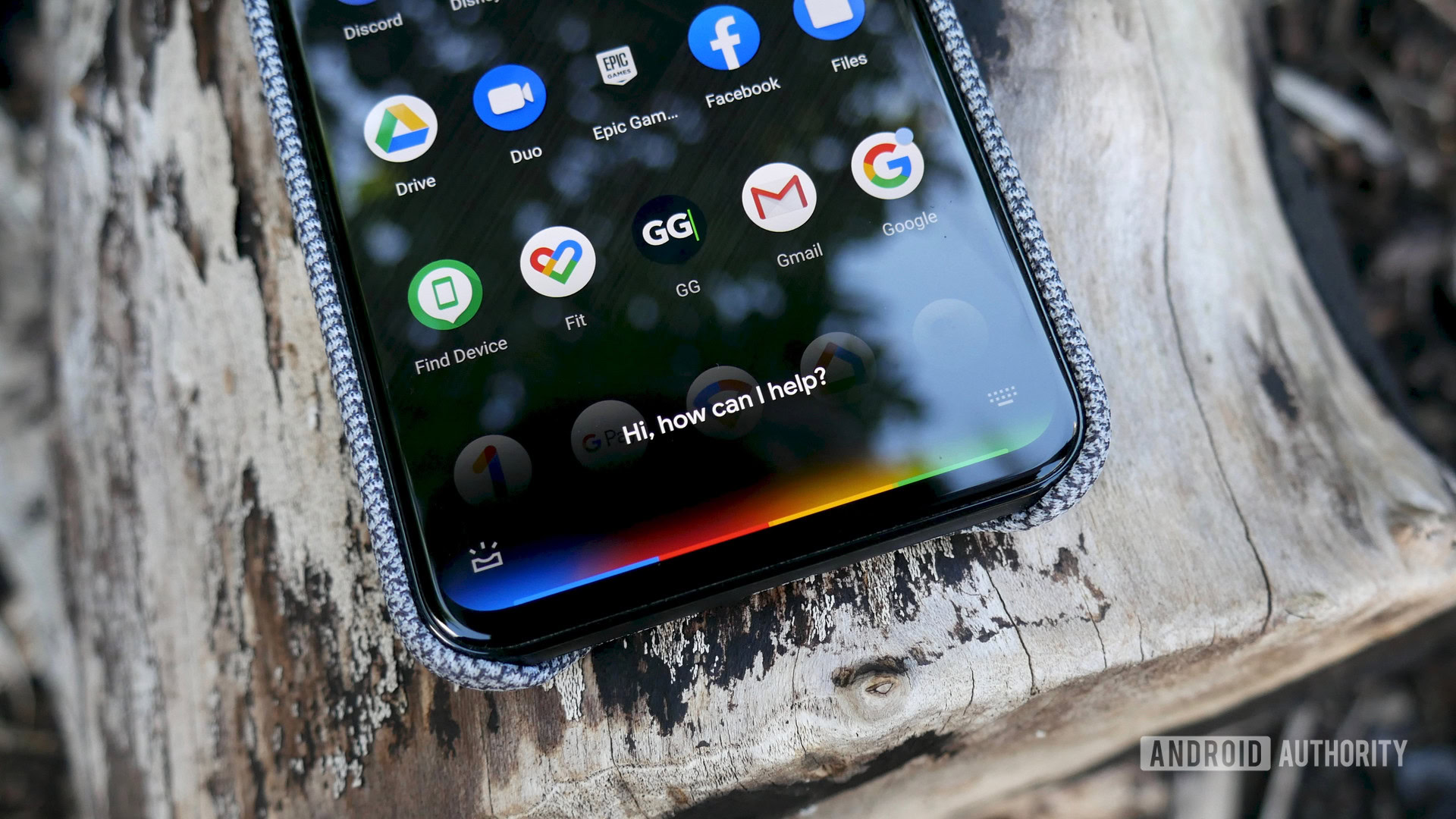
Oliver Cragg / Android Authority
By now, you’ve quickly realized that Google has a footprint in a lot of different industries. However, everything is tied together by Google Assistant, the company’s AI-powered digital assistant.
Although Assistant came out years after Apple’s Siri and Amazon’s Alexa, Google’s knack for nailing software saved the day. Now, Assistant is frequently heralded as the best digital assistant on the market, with faster, more accurate, and more capable responses and actions than Siri or Alexa.
Pretty much every piece of Google hardware you buy will either come with Assistant onboard or work with Assistant in some capacity. What’s more, flagship products from Google — especially its line of Pixel phones — will often get new updates for Assistant before any other product.
While Search is still the company’s cash cow, the company is betting big that the future of the internet will revolve around AI and voice commands. That’s why Assistant is such a top priority and why you’ll find it in every one of its products.
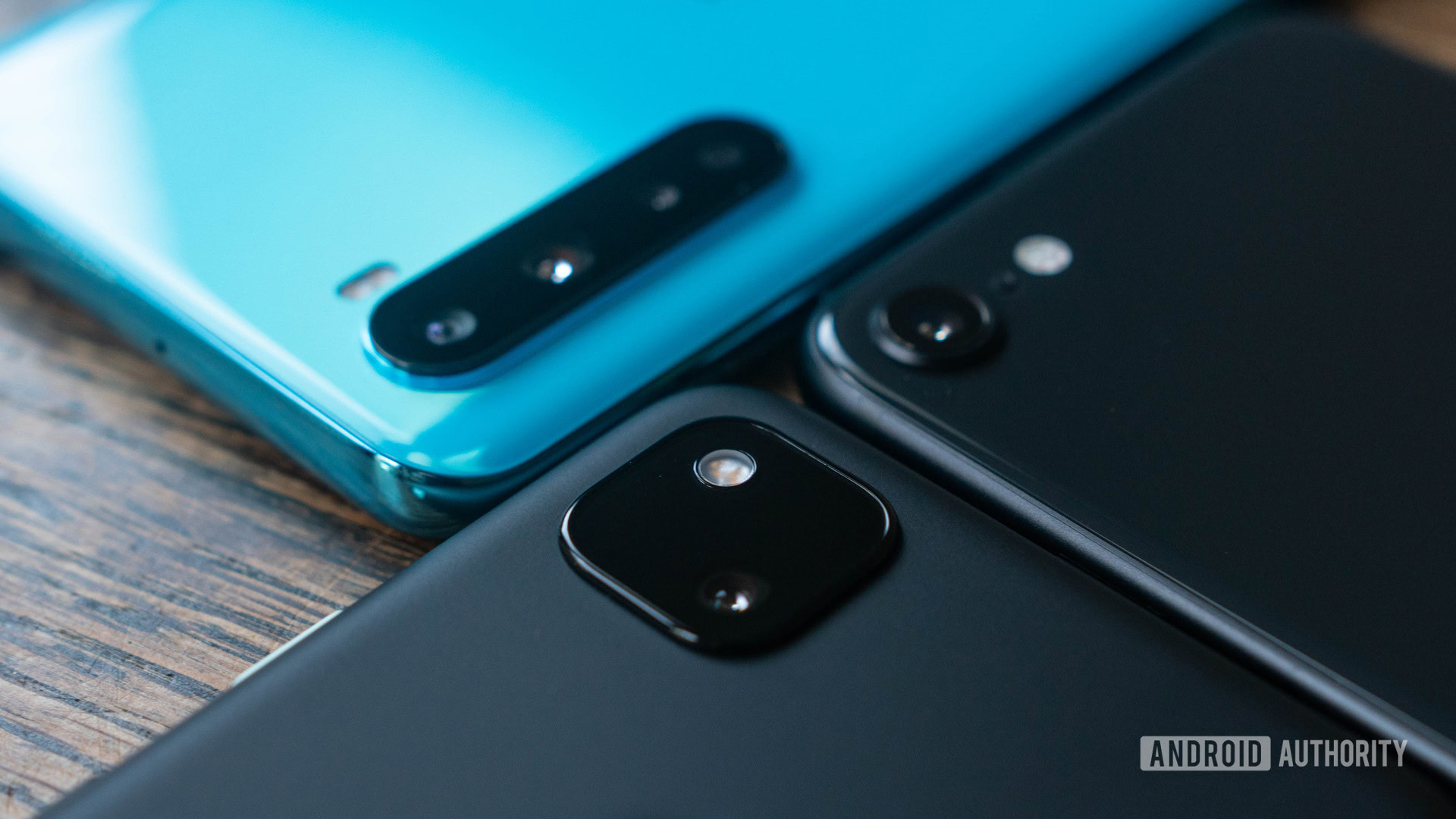
Ryan-Thomas Shaw / Android Authority
Google is obviously a massive company. One would think it doesn’t have many competitors, and if you’re talking specifically about internet searches, you’d be absolutely right. However, when it comes to hardware, the company has plenty of competition.
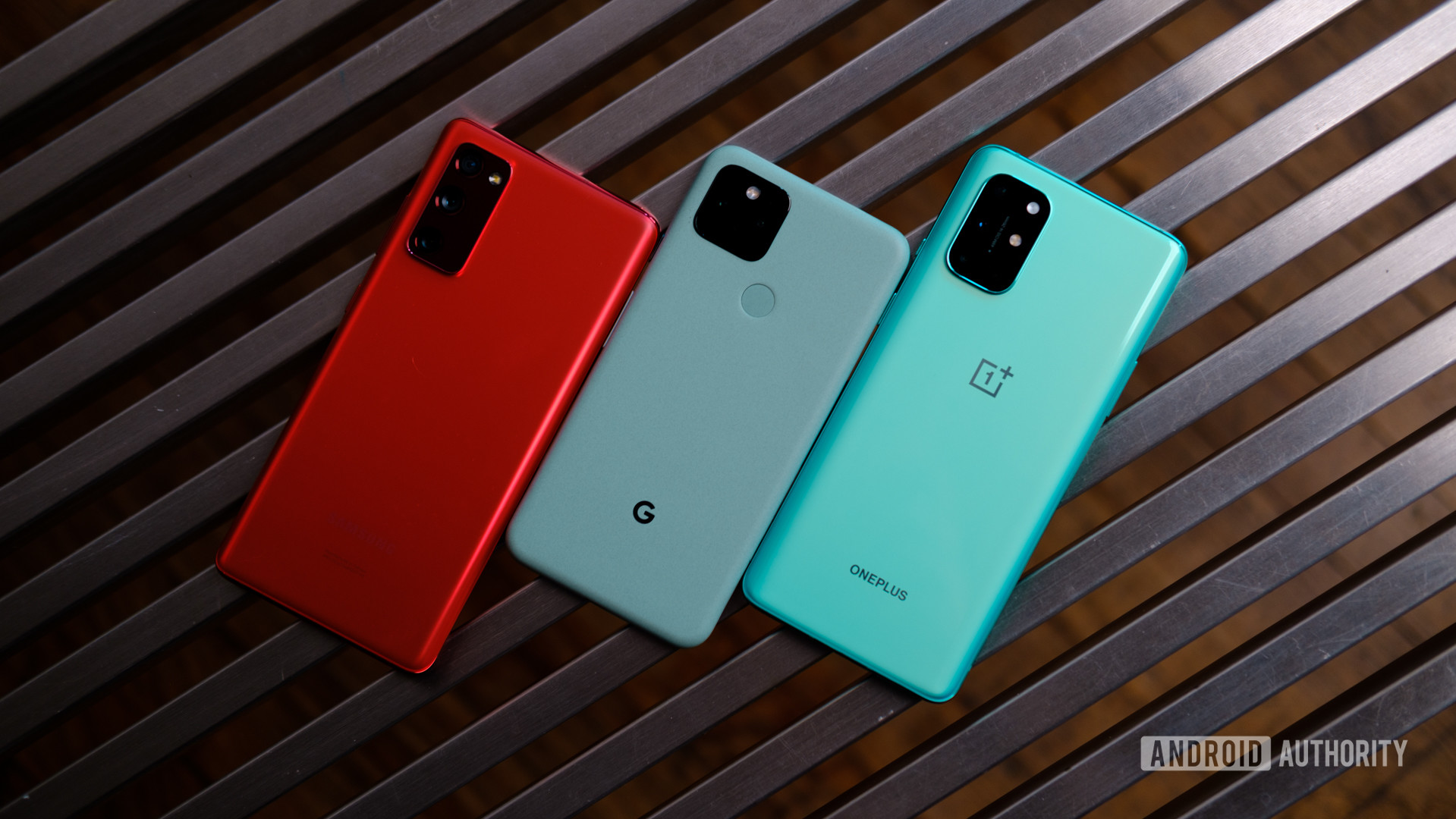
David Imel / Android Authority
Despite its status as one of history’s most successful companies, Google has never been able to crack the top ten smartphone manufacturers in the world. This is due to a variety of factors, such as limited worldwide availability, relatively high prices, and so-so reviews.
The two biggest strengths Google has in the smartphone space are its cameras and software. However, other companies are creating some terrific camera systems, including Samsung, Xiaomi, and even OnePlus. Samsung is also issuing Android updates at an incredibly fast pace now, sometimes even beating Google when it comes to the latest Android security patch.
Ultimately, though, Google’s primary competitor is Apple. Apple’s ecosystem revolves around the iPhone, its star product. Google has been chasing the idea of having Pixels be the iPhone of the Android world, but it hasn’t even come close to replicating Apple’s success, especially here in the United States.
If you are in the market for a new smartphone and don’t want a Pixel (or an iPhone), the next closest thing to a Pixel experience would likely be a Samsung phone.
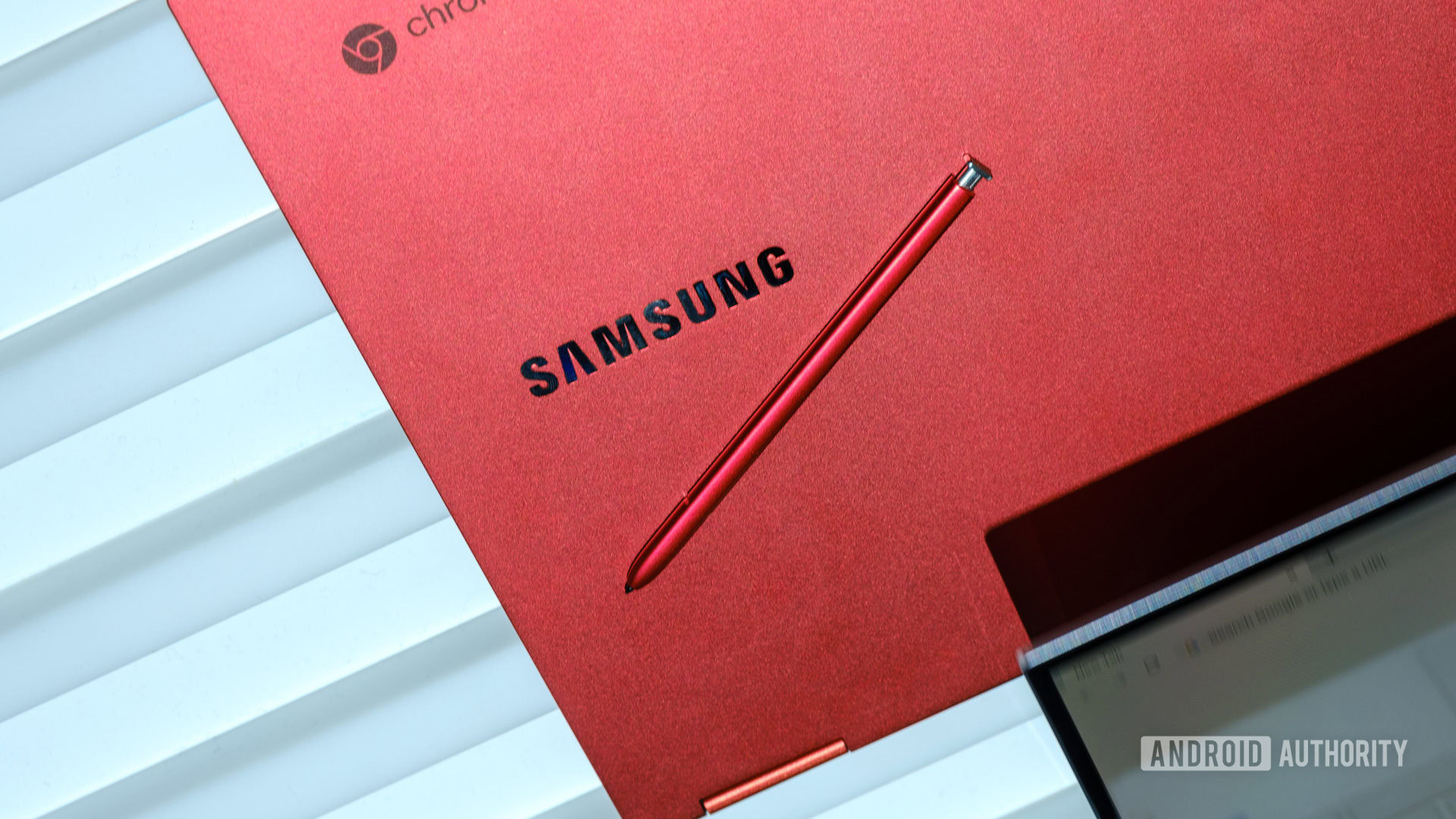
As stated earlier, Google currently only makes Chrome OS-powered laptops and tablets. As such, if you want something with Windows or macOS, you can’t even consider Google.
However, Chromebooks have come a long way. If you had written off Chrome OS years ago, it’s really worth a second look, as it might be able to do everything you need a laptop to do.
Regardless, Google’s Chrome OS hardware is usually on the high-end scale, so its biggest competitor in that space is Samsung. A Samsung Chromebook will also (usually) have decent specs and premium construction. Obviously, Chrome OS systems from both Google and Samsung end up being pretty expensive.
If you don’t want a premium Chromebook, ASUS makes some high-quality budget systems. They won’t be as nice as a Google machine, but they’ll get the job done.
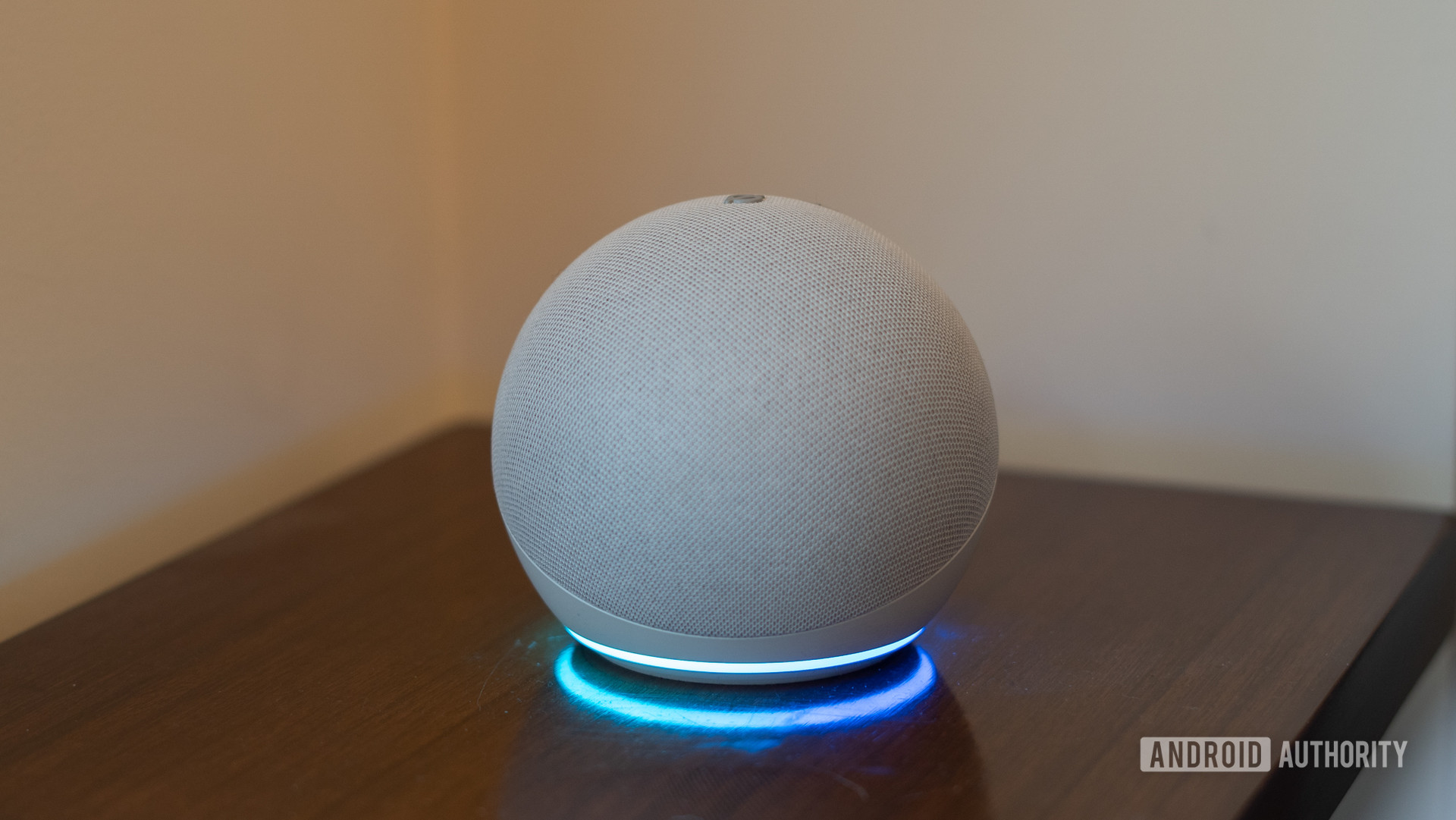
Dhruv Bhutani / Android Authority
By far, Google’s biggest competitor in the smart home space is Amazon. For every product that Google or Nest releases, Amazon has one or more comparable products that are usually less expensive.
Of course, Amazon-made products won’t have Google Assistant. Ultimately, your decisions in the smart home space will be totally dependent on the digital assistant with which you are attached. If you love Assistant, then Google- and Nest-branded products are what you want. If you would rather go with Alexa (or don’t have any preference), Amazon products will work well — and likely save you some cash.
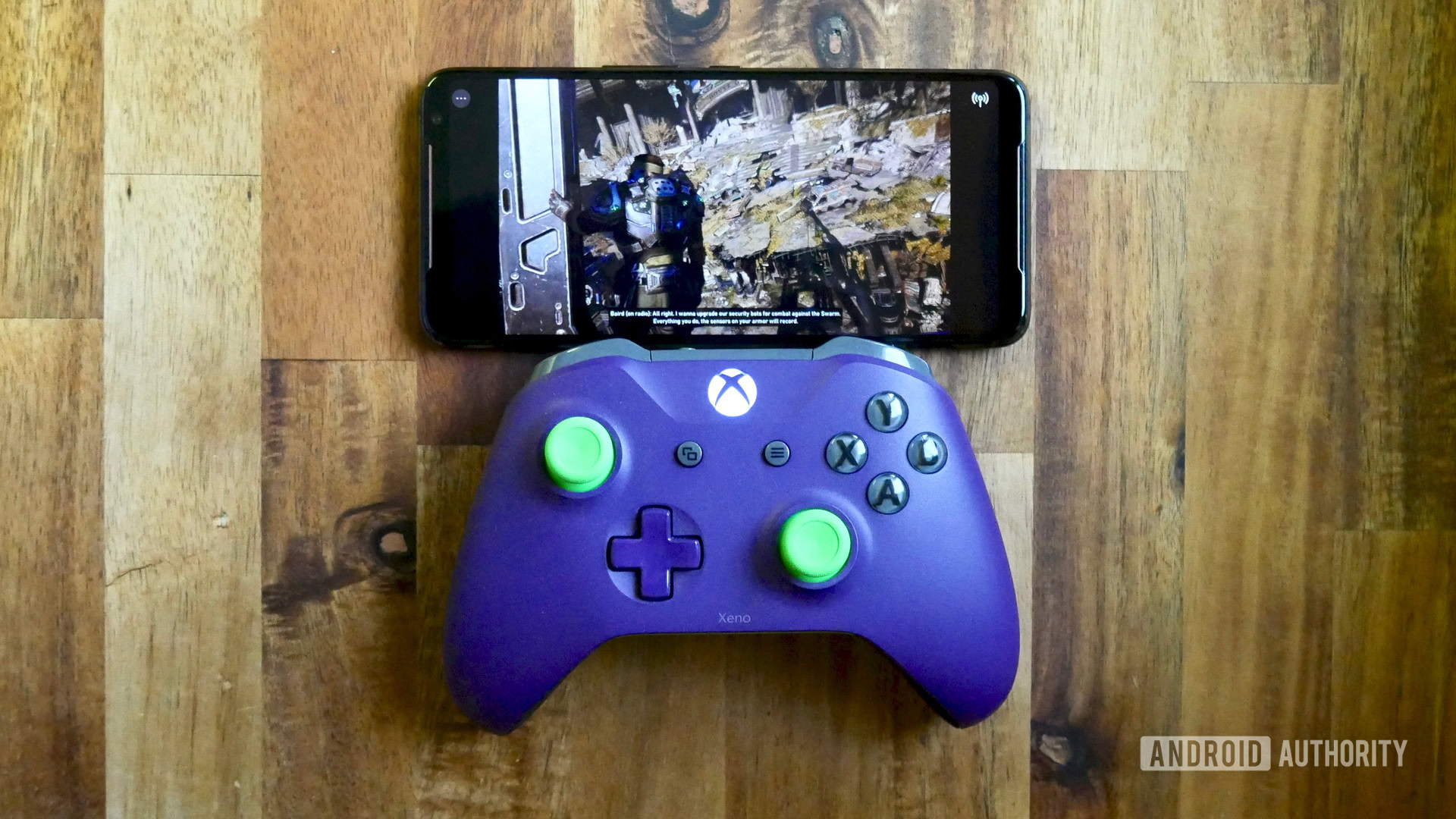
Google is very late to the gaming party. Its Stadia service is on the cusp of the supposed cloud gaming revolution, yes, but there are many, many other players that already have a huge stake in the overall industry. As such, you can’t compare Stadia to an Xbox, PlayStation, or Nintendo Switch. Stadia can only be fairly compared to other cloud-based services.
NVIDIA GeForce Now is another competitor to Stadia. GeForce Now allows you to stream games from the cloud that you’ve already purchased on Steam, making it an attractive option for established gamers. There is a free tier, but it limits gameplay to just one-hour sessions. Streaming performance is also slightly worse than Stadia.
Finally, Amazon just got into the cloud gaming industry with Luna. It is another Netflix-for-games option with a smaller library. This is really new, but anything Amazon does Google needs to take seriously.
Outside of gaming, Google’s newest Chromecast competes with set-top boxes such as Roku and Amazon Fire TV. Reviews for this new streamer are very positive, but it will be tricky for anyone to overtake the massive market lead Roku has in the US.
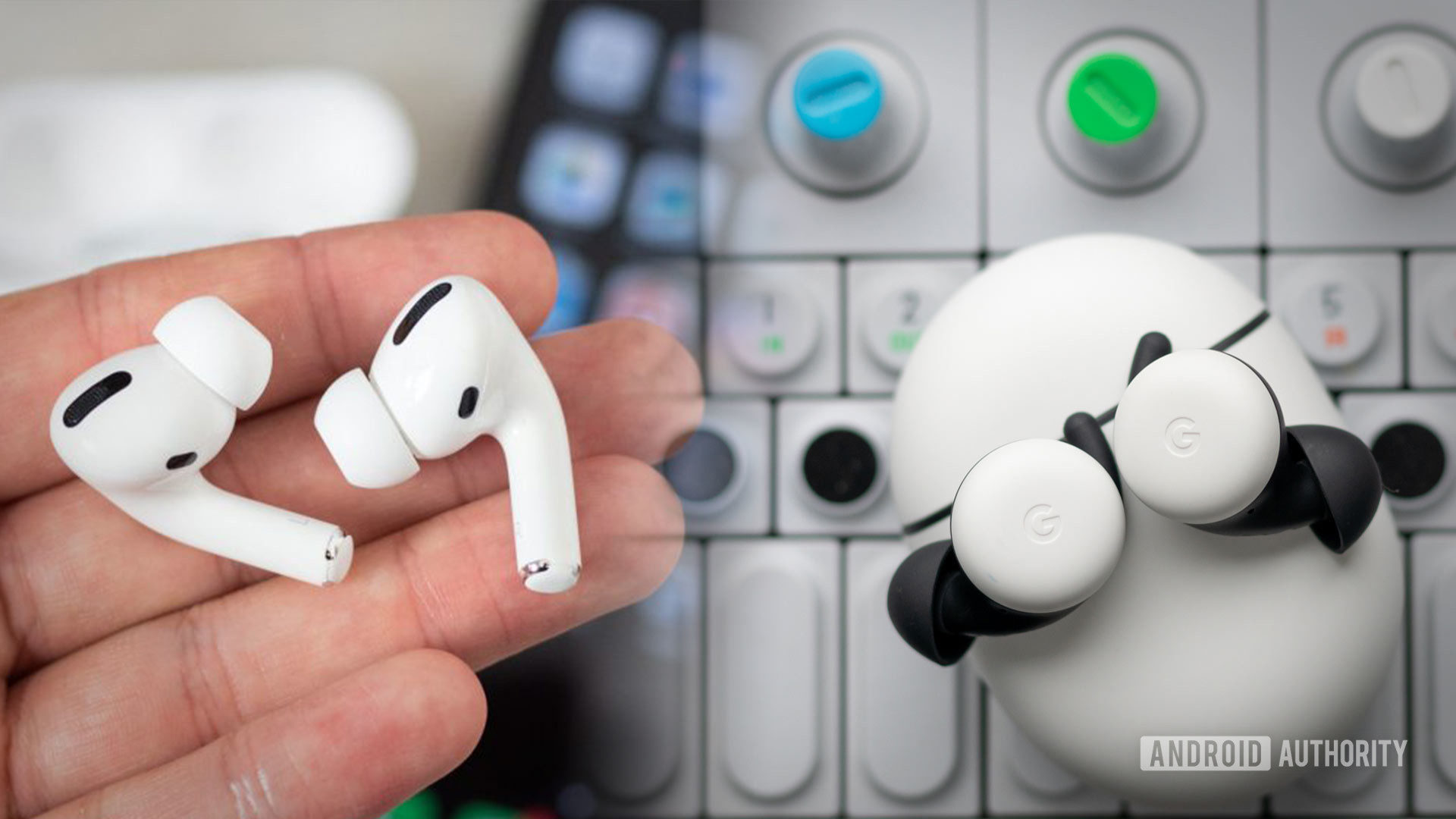
Of course, there are literally hundreds of other models of true wireless earbuds out there. Samsung, OnePlus, HUAWEI, Sony, and many other companies have high-end earbuds that offer many of the same features as Pixel Buds. We have plenty of tips on buying great earbuds here.
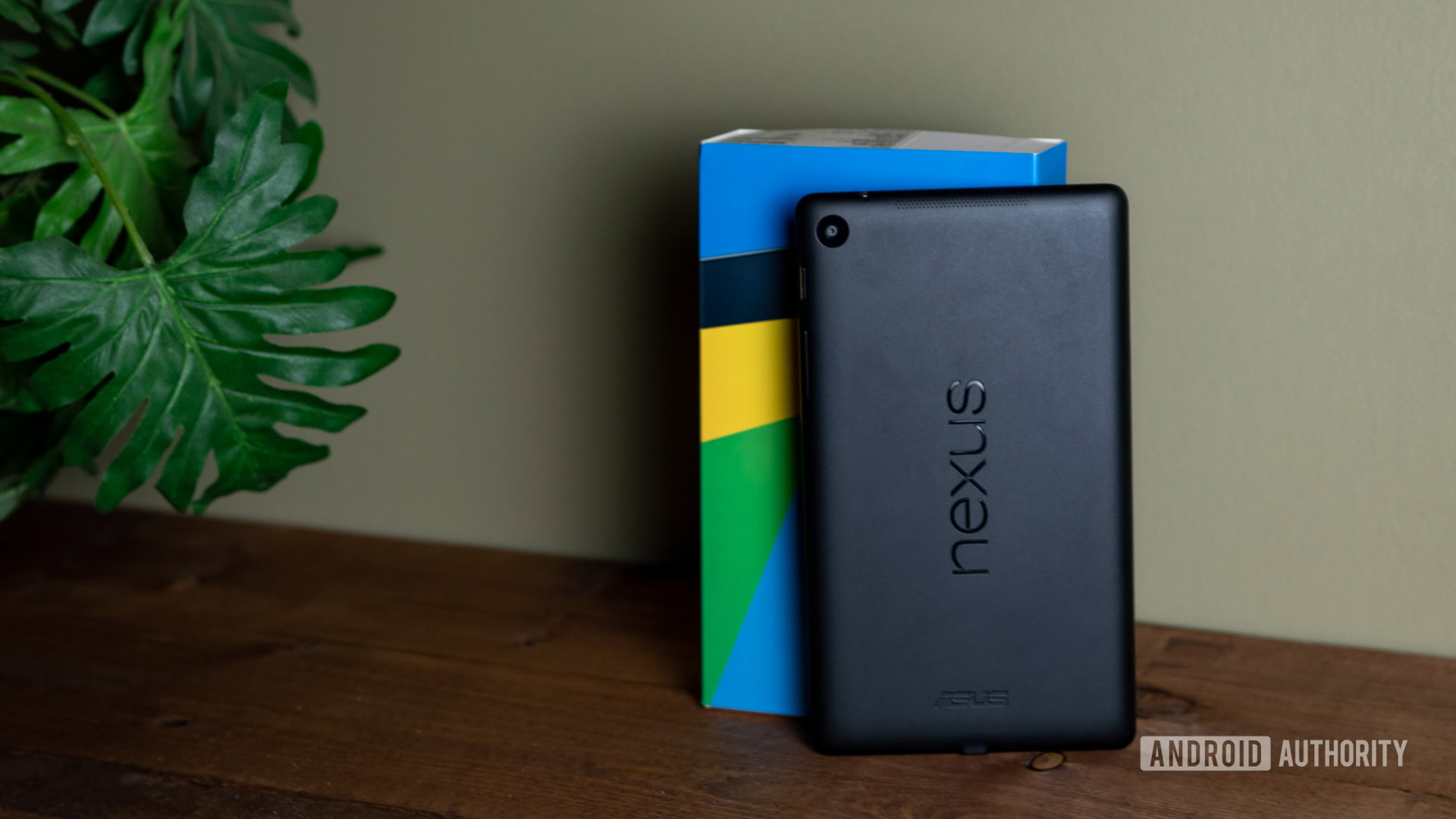
Google is often swinging for the fences and then coming up short. However, the company has had more than a few solid hits in its time. Below, you’ll find the four times the company has totally nailed a product or hardware-related development.
In 2010, Google had only just recently purchased the Android operating system. Several Android-powered phones were already on the market and doing very well, but Google didn’t have anything that was distinctly its own.
Enter the Nexus line, beginning with the first phone in the series, aptly called the Google Nexus One. The phone was designed by Google but manufactured by HTC. Unlike other Android phones, it came with a close-to-stock experience, unburdened by carrier bloatware or software skins designed by manufacturers.
Nexus phones also (mostly) received updates directly from Google, and had unlockable bootloaders to encourage developers to tinker with the phones. The company would go on to create over a dozen Nexus devices, including phones, tablets, and even a media streaming player that was ahead of its time.
The Nexus line is remembered as containing some of Android’s best-ever phones, including the Samsung Galaxy Nexus, the Nexus 5, and the Nexus 6P. The Nexus 7 is also fondly remembered as one of the first Android tablets to truly rival the Apple iPad Mini and the Amazon Kindle Fire.
As mentioned earlier in this post, Google is betting big that AI-powered digital assistants are the future. When it formally launched Google Assistant, it was mostly relegated to specific apps, certain Pixel phones, and the one smart speaker the company had at the time, the $100 Google Home.
As far as mass adoption goes, there probably isn’t a Google hardware product as successful as the Google Home Mini.
In 2017, though, Google launched the Home Mini, an unbelievably inexpensive smart speaker that brought Assistant to pretty much anyone. At certain points, the company was literally giving the device away. The strategy helped Google Assistant gobble up market share. It now accounts for around 43% of the overall market, dwarfing Amazon’s Alexa, which had a multi-year head start.
For a company of its size, Google doesn’t have too many high-profile hardware acquisitions under its belt. Obviously, a few of its software and services acquisitions have been huge — YouTube, Android, and Waze being some of the biggest. In the hardware space, though, the best acquisition in its roster would probably be Nest Labs.
Related: The best Google Nest Home apps to maximize your experience
Google had intentions of entering the smart home space, and buying Nest for $3.2 billion put it on the map immediately. This helped pave the way for the Google Home Mini mentioned earlier, as well as the Home Hub (which became the Nest Hub).
Granted, there are plenty of things about the acquisition that haven’t gone smoothly. Google’s slow and clunky transition of Nest-branded products to Google-branded products hasn’t been exemplary, and Google’s reputation as a data-mining privacy black hole might turn away some buyers. The core purchase, though, has likely been lucrative for the company as the smart home industry has only grown and likely will continue to grow over the next decade.
It would be hard to have Pixel die-hards agree on the best Pixel phone of all time, but few would argue that the Pixel 3a is likely the most important. Google proved over the years that it didn’t really understand the premium smartphone market. High-end Pixels were usually overpriced for what they were and featured uncompetitive specs.
The Pixel 3a was the first time Google understood its strengths — and its weaknesses — and incorporated that knowledge into the design of the product. There were no flashy features, no crazy future-forward tech gambles, no high-end production costs. The Pixel 3a was a simple phone with great software, a great camera, and a great price. Period.
Of course, the launch of the Pixel 6 series has changed the tide for Google in the premium phone space. Time will tell if its mastery of the budget sector will continue.
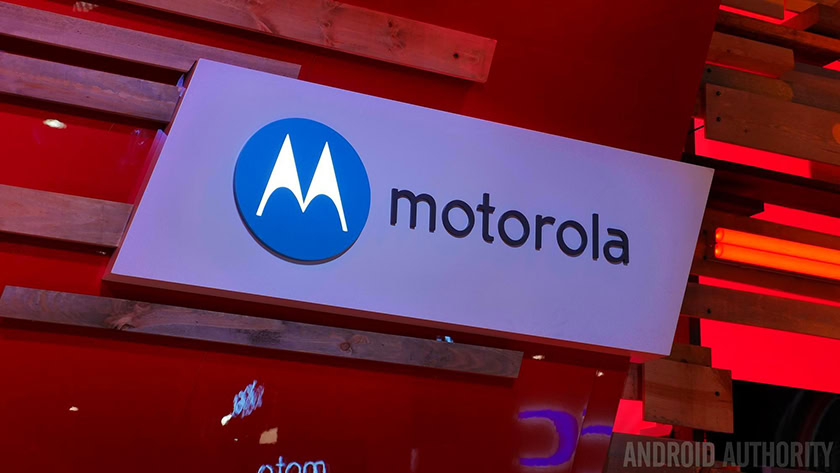
Once again, Google tends to swing for the fences with its hardware division, and that invariably leads to lots of failures. Below, you’ll find the four saddest parts of Google’s hardware history.
In 2016, Google revealed the Pixel and Pixel XL, its first completely self-made smartphones. When Google revealed the phones, the Google Nexus 6P — co-created with HUAWEI — was about a year old but still available in stores. Naturally, the question quickly came up of what would happen to the Nexus line now that the Pixel line existed.
Related: Seven years after the Nexus 7, what happened to Android tablets?
At first, Google played coy and issued wishy-washy answers about how it didn’t know what the future held for the Nexus line. However, the Nexus 6P — and the Nexus 5X, released at the same time — ended up being the last Nexus-branded devices.
Although Google’s shuttering of the Nexus line makes sense from a branding and marketing perspective, it’s also one of the rare times that Google killed a hardware line that was actually successful. While Nexus products were never top-of-the-line devices, the Pixel line hasn’t improved Google’s market share much, if at all. Now, with the Pixel 6 looking and feeling a lot like a Nexus device, it almost makes us wonder if Google would have been better off sticking with Nexus the whole time.
With Google, there are always concerns over just how far the company goes in relation to our security and privacy. With that in mind, it’s little wonder that Google Clips didn’t last long.
Clips, as the name implies, is a small camera system that clips onto pretty much anything. It will automatically record video and photos by using a machine-learning algorithm. According to Google, this will help people capture spontaneous moments that they otherwise would miss due to being too slow opening their smartphone.
Related: We ranked 50 failed Google products from best to worst
Almost as soon as Clips landed, critics were fired up over the product. A small LED light on the device would let you know if it was recording or not, but if you couldn’t directly control it, that still left many potential customers uneasy. It also was a hard sell because of how niche the product was — it wasn’t a particularly great camera, so pros weren’t interested, and general buyers likely didn’t understand how it could be useful.
Clips ended up being one of the most short-lived hardware lines from the company. Google launched Clips on October 4, 2017, and ended the entire line just two years later.
If you’ll remember, Google launched the Nexus One in 2010. This was only three years after the launch of the first iPhone, which most agree heralded the beginning of the smartphone industry.
In 2011, Google made a huge acquisition to better position itself in the mobile world: it spent an astonishing $12.5 billion to acquire Motorola Mobility. At the time, Motorola was struggling to get a good foothold in the mobile industry. It seemed like the perfect marriage of Google’s software skills (and buckets of cash) with Motorola’s already-established hardware.
Related: The best Motorola phones you can get
Unfortunately, Google made a bunch of bad moves. It dumped a ton of cash into something called Project Ara, which promised to make a fully modular smartphone a reality (the phone never launched). It also bet big on producing all its smartphones in the United States, even building a large factory in Texas.
However, none of this panned out. With the division bleeding cash, Google ended up selling Motorola to Lenovo less than three years later for $2.91 billion — a multi-billion-dollar loss.
Thankfully, though, Google’s ownership of Motorola did give us something great: the Moto G line. Moto G phones are consistently some of the best budget Android devices you can get, and the G series represents one of the top-selling lines globally each year. So it’s not all bad.
There have been a lot of problems and critical failures related to Pixel phones over the years. With pretty much every launch, you can point to numerous things and say, “Now, why would Google do that?” With the Pixel 4 and Pixel 4 XL, though, even Google was asking that question.
According to behind-the-scenes reports, the development of the Pixel 4 was fraught with difficulties. Top members of the hardware team were disappointed with the design and specs even before the phone launched. What’s more, one of the most important people on the Pixel team (who was one of the main contributors to the success of Pixel cameras) left for Adobe after the Pixel landed in stores.
The Pixel 4 will probably go down in history as the weakest Pixel device.
Eventually, after dismal sales and tepid reviews, the company laid the Pixel 4 line to rest. The phone was available for barely ten months.
It would be hard to give just one reason for the demise of the Pixel 4 (although the horrifyingly bad battery life is likely the biggest culprit), but it will inevitably go down as the turnaround moment for Google. Now, with the Pixel 6, Google appears to be moving away from the failures of the Pixel 4 to focus on its strengths.

You’ve probably learned everything you’ve ever wanted to know about Google hardware already. However, there are still a few miscellaneous things we want to make sure you know about!
Over the past few years, bad press has really changed Google’s approach to privacy. It’s now easier than ever to access all your data, stop the company from tracking certain aspects of your life, or even delete your data entirely. Many hardware products also have privacy features built-in. The Nest Mini, for example, has a simple hardware switch that turns off the microphone entirely whenever you want it off.
Most Google hardware products come with the usual one-year warranty against factory defects. You can buy third-party insurance on the company’s hardware that will extend that time limit, but the company itself does not offer those programs.
Google used to offer everyone unlimited free cloud storage for photos and videos through Google Photos. However, that policy ended in June 2021. Now, you must pay for Google One storage for all your backed-up photos and videos. However, everything in Google Photos prior to June 2021 does not count towards your storage limit.
Technically, the company commits to three Android upgrades and five years of monthly security updates. However, this currently only applies to the Pixel 6 series, at least for now.
No. Since the two operating systems are different, there are many popular Windows programs that won’t be available on Chrome OS. However, Chromebooks have come a long way, and there are usually many different alternative programs available that work similarly to their Windows-based counterparts. If you are looking to buy a Chromebook and are worried about which programs you’ll need to leave behind, we advise checking out the Google Play Store for apps similar to what you need.
No. Google’s smart displays use a Fuchsia-based operating system, which is different from Android. Smart displays do not have access to the Google Play Store and have a limited selection of features.
No, Pixel Buds do not need to be paired with a Pixel phone. Granted, there are some features of Pixel Buds that will not be available to non-Pixel phones, but the basics will work on all Android phones.

O que sabemos sobre corantes alimentares artificiais e saúde como RFK, Jr., declara uma proibição dos EUA
Nesta semana, o Secretário de Saúde e Serviços Humanos anunciou planos para remover mais oito corantes alimentares do sistema alimentar dos EUA

Na terça eliminar oito corantes alimentares à base de petróleo Nos dois anos seguintes, com base em algumas evidências que as vinculam a riscos à saúde.
A mudança de Kennedy, secretária do governo Trump do Departamento de Saúde e Serviços Humanos, segue suas promessas anteriores de proibir vários aditivos químicos de alimentos-incluindo corantes artificiais que são comumente usados para iluminar cereais cor de arco-íris, doces, batatas fritas, doces e outros alimentos processados. Estados individuais, como Califórnia e Virgínia Ocidentaltambém pressionaram independentemente a legislação para proibir certos corantes e conservantes alimentares este ano. No evento de imprensa de hojeKennedy discutiu a diretiva e várias reivindicações sobre o valor nutricional dos alimentos ao lado do diretor da Administração de Alimentos e Medicamentos Marty Makary, o diretor nacional de saúde Jay Bhattacharya e outros funcionários públicos. Makary disse que eles estabelecerão uma linha do tempo para a transição da indústria de alimentos para “alternativas naturais”.
“Não há razão para não remover (tais corantes alimentares artificiais) se eles estão lá apenas para apelo visual. Se não houver um objetivo promotor de saúde, e na verdade existe o menor risco de prejudicar a saúde, por que não removê-los?” diz Kathleen Melanson, cientista nutricional da Universidade de Rhode Island. Ela acrescenta, no entanto, que esses corantes químicos provavelmente são apenas parte do problema. “Há muito mais na comida do que fatores únicos”, diz Melanson.
Se você está gostando deste artigo, considere apoiar nosso jornalismo premiado por assinando. Ao comprar uma assinatura, você está ajudando a garantir o futuro das histórias impactantes sobre as descobertas e idéias que moldam nosso mundo hoje.
O FDA atualmente certifica Nove aditivos de cores Para uso em alimentos. Em janeiro passado, a administração de Biden de saída já havia iniciado o processo para proibir um deles, vermelho nº 3. Kennedy terá como alvo os outros oito corantes alimentares artificiais, como amarelo nº 5, azul nº 1 e vermelho nº 40.
A decisão de proibir o Red No. 3 foi baseada em um estudo em que os ratos machos desenvolveram tumores tireoidianos após serem expostos a altos níveis de substância. Embora outros estudos em humanos e animais não tenham mostrado resultados semelhantes, o corante foi banido sob a Lei Federal de Alimentos, Drogas e Cosméticos Cláusula de DelaneyExplica Tracy Crane, professora associada de oncologia médica no Sylvester Comprehensive Cancer Center, parte da Faculdade de Medicina da Universidade de Miami Miller e do Sistema de Saúde da Universidade de Miami.
“Na cláusula de Delaney, (os proponentes da proibição) foram capazes de afirmar que qualquer coisa que causasse câncer em humanos ou animais pudesse ser eliminada da dieta, e foi isso que aconteceu com o Red No. 3”, diz Crane, que se perguntou se outros corantes alimentares experimentariam o mesmo destino. “Definitivamente, existem estudos para alguns desses (corantes) que estão na lista que mostraram propriedades causadoras de câncer em camundongos”.
Estudos em animais mais antigos associaram alguns corantes azuis, amarelos e vermelhos a riscos de desenvolvimento de tumores e neurotoxicidade. Algumas pesquisas sugerem que a neurotoxicidade pode contribuir para o transtorno do déficit de atenção do déficit. Melanson chama as evidências de “mixadas”, no entanto. A exposição direta foi testada apenas em animais. Os dados humanos têm sido limitados principalmente à população ou estudos epidemiológicos-em que os participantes foram solicitados a se lembrar e auto-relatar os alimentos que comeram. Isso levou alguns cientistas a dizer que não há informações suficientes para tirar conclusões sobre as ameaças potenciais da saúde dos corantes alimentares.
Uma revisão de pesquisa da FDA sobre os efeitos potenciais dos corantes alimentares no comportamento das crianças também concluiu que A maioria das crianças não teve efeitos adversosembora alguns indivíduos possam ser sensíveis a alguns corantes. O FDA afirma que os aditivos de cores são seguros para consumir quando são usados de acordo com os regulamentos da agência. E a Associação Internacional de fabricantes de cores, um grupo que representa a indústria global de cores, disse anteriormente que o Pequenos níveis de corantes alimentares artificiais que os humanos normalmente comem são geralmente seguros. (No momento da imprensa, a associação não respondeu a um pedido de comentário de Scientific American.)
“O perigo está sempre na dose”, diz Melanson.
UM Wall Street Journal A análise avaliou os dados do Departamento de Agricultura dos EUA para mais de 450.000 produtos alimentícios e descobriu que 10 % continham pelo menos um corante artificial – e que mais de 40 % tinham múltiplos corantes. “Quando os aditivos alimentares são aprovados, eles geralmente são testados um de cada vez”, diz Melanson. “Não sabemos o que acontece com as interações.”
O consumo de um alimento com vários corantes dificulta o conhecimento da dose total que foi ingerida, diz Melanson. Os efeitos acumulativos de um todo dieta Composto por muitos alimentos diferentes com corantes artificiais, consumidos ao longo da vida, é ainda mais difícil de avaliar. Uma doença como o câncer leva muito tempo, diz Crane, observando: “É muito difícil para nós realmente sabermos qual é o impacto direto dessas dietas alimentares”. Ela acrescenta que nem todos os corantes são os mesmos e cada um pode ser processado no corpo de maneira diferente.
Melanson e Crane concordam que os corantes alimentares são apenas um ingrediente que pode contribuir para os riscos à saúde.
“Não se trata apenas de um tipo de ingrediente; trata -se de todos os ingredientes que estão lá”, diz Melanson. “Se tudo é a visão do túnel em um fator sem considerar esses outros fatores de risco potenciais – o excesso de sódio e açúcar e processamento, falta de fibra, falta de nutrientes fortificantes -, então podemos estar perdendo alguns aspectos”.
Mais detalhes estão pendentes, mas espera -se que os fabricantes de alimentos tenham que alterar suas práticas de produção ou considerar aditivos alternativos para colorir. Fontes naturais, baseadas em alimentos, como açafrão, páprica, abóbora ou cenoura, também foram usadas. Mas não está claro o que a transição custará aos fabricantes e agências federais, diz Melanson. Atualmente, os fabricantes têm até 2027 para remover o Red No. 3 dos produtos alimentares e até 2028 para removê -lo dos medicamentos. No briefing de imprensa de hoje, no entanto, a RFK Jr. e outras autoridades de saúde afirmaram que esse corante e os outros precisam ser removidos mais cedo, embora nenhuma linha do tempo oficial tenha sido apresentada.
“Eu sei que esses procedimentos levam tempo e os fabricantes de alimentos precisam reformular”, diz Melanson. “Mas, enquanto isso, os americanos podem considerar recuar alimentos ultraprocados – aqueles que estão obviamente no de ponta do espectro de processamento e formulação. ”



Os arqueólogos que trabalham no norte da Macedônia podem ter descoberto os restos mortais de Lyncus, uma cidade antiga que era a capital do reino de Lyncestis.
Mais análises são necessárias para apoiar a descoberta, mas, se confirmado, a descoberta pode revelar a localização do local onde Alexandre, o GrandeA avó paterna de Sing nasceu.

Xiaomi has announced the Redmi A1, an unusual smartphone in the company’s roster. For one, the device is the first in Xiaomi’s ‘Redmi A’ series, as its name implies. Additionally, the Redmi A1 runs Android 12, not MIUI 13. Incidentally, leaks suggested that Xiaomi would pre-install Android 12 (Go edition), a cutdown OS for budget smartphones.
However, Xiaomi’s marketing materials refer to the Redmi A1 as featuring ‘a clean Android experience with Android 12’. As such, it seems that the Redmi A1 is closer to the Xiaomi ‘Mi A’ series, which the company left to wither after 2019 with the Mi A3. As for the Redmi A1, Xiaomi equips it with the MediaTek Helio A22, LPDDR4X RAM and a 6.52-inch display that operates at 1,600 x 720 pixels, 120 Hz and up to 400 nits.
Elsewhere, the Redmi A1 has an 8 MP rear-facing camera, an auxiliary rear-facing camera and a 5 MP front-facing camera. For reference, the device measures 76.75 x 164.9 x 9.09 mm and weighs 192 g. The Redmi A1 features two nano SIM card slots and a microSD card slot that supports up to 512 GB cards, too. The Redmi A1 is only available with 2 GB of RAM and 32 GB of expandable storage.
At launch, Xiaomi will sell the smartphone for INR 6,499 (~US$81), although it will eventually rise to INR 8,999 (~US$113) after a short pre-sale period. Xiaomi will sell the Redmi A1 in Black, Light Blue and Light Green colour options.

With an official launch scheduled for the end of 2023, the new version of the operating system for smartphones from Samsung it should have several innovations in terms of design, usability and accessibility. The Korean company has already started carrying out tests with a closed audience and the showmetech tells you each of the new features that should appear in the OneUi 6 developed by South Korean for your mobile devices. Check out!
Starting with the panel where we make basic settings to turn on the internet and other functions, One UI 6 will have a new panel that facilitates the activation and deactivation of Wi-Fi and Bluetooth that can probably also be edited in the way the user wants. This is a setting on Realme models that is finally available to anyone who has a Samsung cell phone. See the change:

In addition, moving to the bottom, it was even easier to activate the dark or light mode according to the user’s taste. The eye comfort filter can also be easily activated in the brightness section and one-handed use should look even better. Samsung reminds you that this setting shown above needs to be activated in the Display Settings so that, in just one swipe, everything is displayed at once. Until One UI 5, two swipes were required. See the preview:
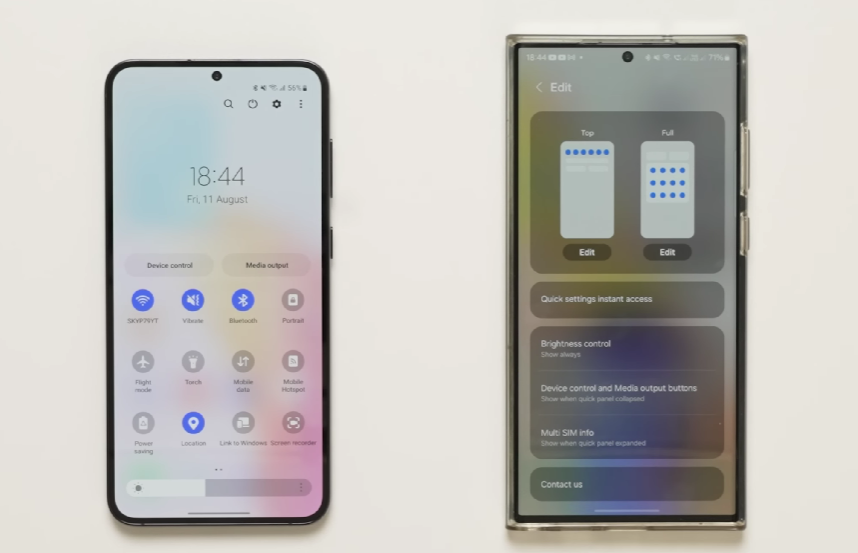
Finally, another very apparent change is in music playback. It is now possible to see the album art or almost complete song in the notification bar, delivering a better visual experience. It is still possible to advance the music tempo just through the notification bar, without the need to open the music application.
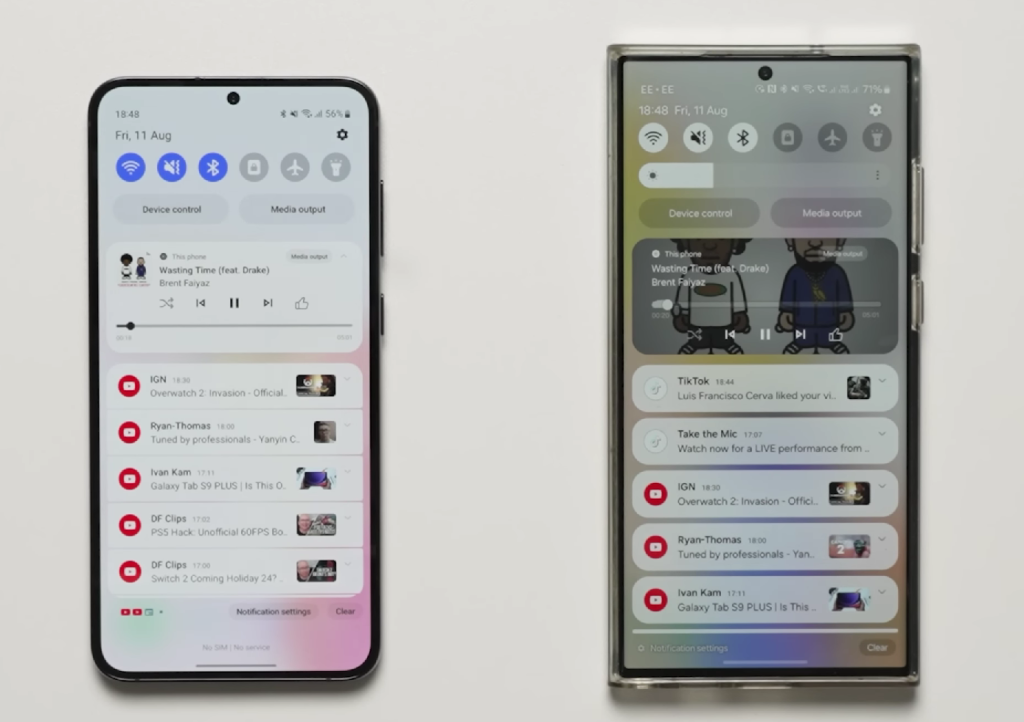
Since the launch of One UI 5, Samsung has been tinkering a lot with customizing the lock screen and homepage of its smartphones. O Galaxy Good Lock It’s a good option, but One UI 6, based on Android 14, will now allow its users to arrange the clock on any part of the screen they want.
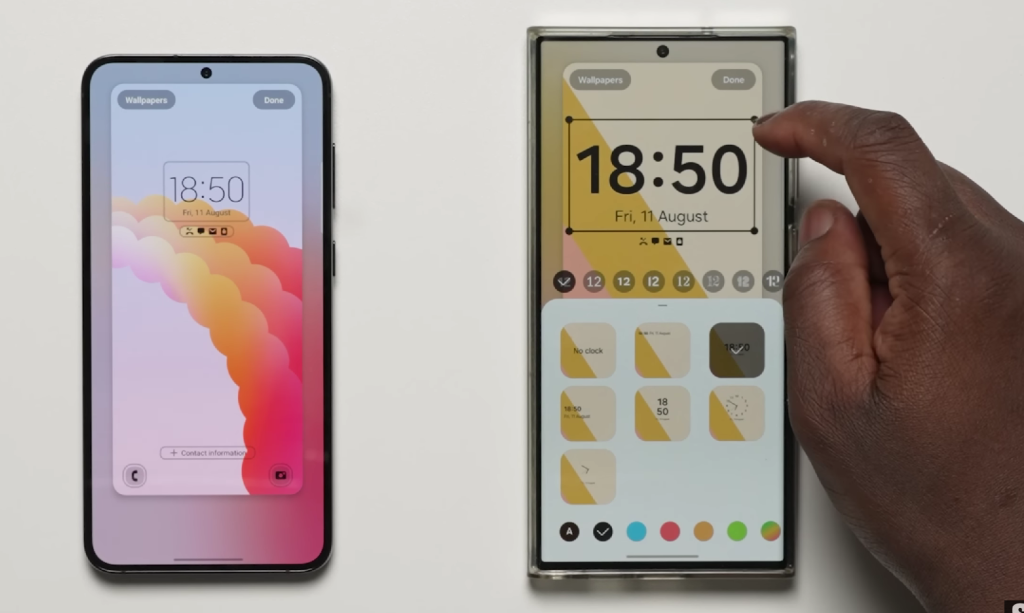
New fonts and clock shapes are also available so that your lock screen can be colored and styled to your personal taste. The number of possibilities is immense and you will surely find a model that is ideal for you.
In addition, Samsung applications have had a small change: the names are now only displayed on one line and the “Galaxy” suffix, along with the Korean company name, have been removed so that everything is more intimate. This is also focused on helping users search for an app in the general menu.
A new font exclusive to One UI 6 will also be made available. It was defined by those who had access to the Beta program as “more modern and more stylish”. At the same time, it must be enabled in the Settings to be applied to the operating system.
This is a novelty that has already been seen on smartphones from Realme and Xiaomi. When pop-up (floating) windows are open, they will just be minimized instead of being closed after you access the task view. It’s a simpler way to keep working until you get back to the home screen. That way:

Like every Android update, of course we would have keyboard changes. Samsung has prepared new emojis for its keyboard that can be used in various messaging applications or social networks. The Galaxy S23 Ultra, on the left side of the photo below, shows the difference between One UI 5 and One UI 6:

It is expected that the news will also reach the Google Keyboard, an alternative often chosen by those who use the operating system of Google.
Previously, when a photo or video was uploaded to the share screen, users were shown a small preview. This is bigger so that mistakes are not made.

Another novelty is on the sharing screen of applications such as Google Chrome, it will be possible to share not only the screenshot, but also the address of the website you are currently accessing.
Another novelty in OneUI 6.0 is the new weather widget, capable of updating important alerts. Now, you can see detailed information about strong storms, snow, rain, moon phases and times, atmospheric pressure, visibility distance, wind direction and other events that may compromise your routine.
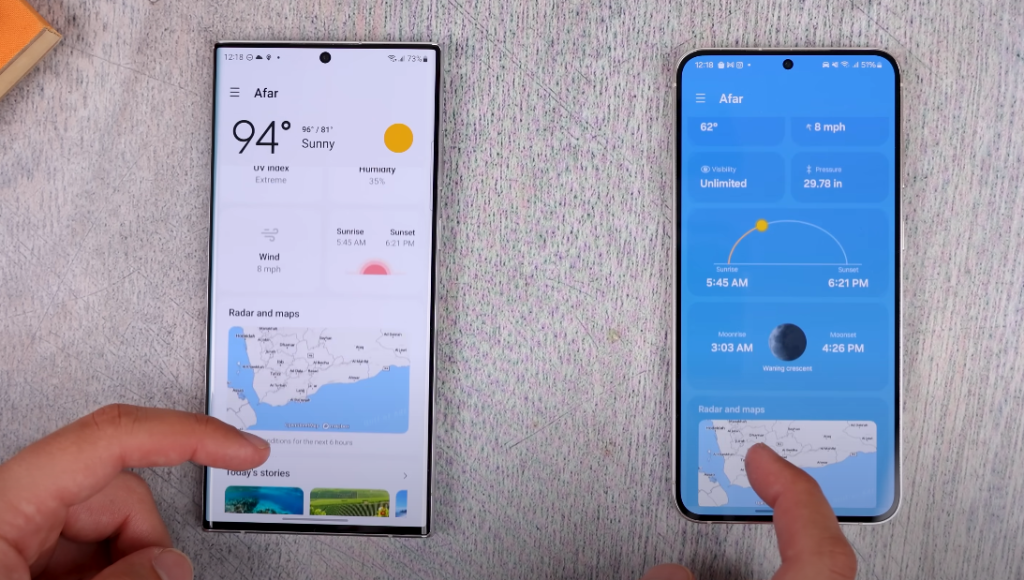
In addition, the new OS comes with an interactive view on the map, helping users who want to find weather information, even if they don’t know where they are at that moment. Finally, the illustrations in the Weather widget and app have been improved to provide better information about current weather conditions. Background colors also change depending on the time of day.

Now you will be able to add custom camera widgets to your home screen. You can set each widget to start in a specific shooting mode and save the photos in an album of your choice, for example.

The camera app is packed with incredible new features, designed by Samsung to make it easier to use on a daily basis. Now, it is possible to more easily access the resolution settings, thanks to the dedicated button in the quick settings tab located at the top of the screen in Photo and Professional modes, for example.
Another feature is quality optimization. With it, you can choose between 3 levels of quality optimization for the photos you take. At “Maximum”, you can get the highest quality images with maximum post-processing. Choose “Minimum” to reduce the amount of post-processing so you can take pictures as quickly as possible. You can also choose “Medium” mode to get the best balance between speed and post processing.

It will also now make it easier to keep photos level, as a leveling line will appear in the middle of the screen when using the rear camera in all modes except Panorama. The line will move to show whether or not your image is level with the ground.
Ease is also present when choosing the size of the videos thanks to a pop-up that appears when you tap on the button. Also, the filter and face effects now use a dial instead of a slider, making it easier to make fine adjustments with just one hand.
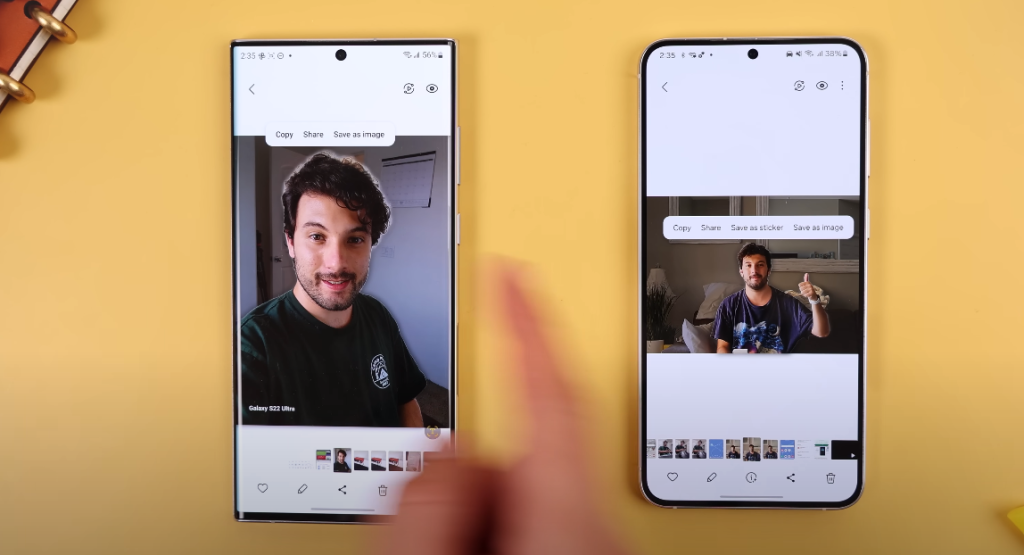
The Gallery also brings news. Among other things, it is now possible to save cropped images as a sticker. That way, you can use them later when editing photos or videos. Another new possibility is drag and drop with two hands, making it easier to organize photos and videos.
Finally, it is now also possible to perform quick edits in the details view. Just swipe up from the bottom to get quick access to effects and editing features that you can apply right away.

A Samsung it also incorporated changes to its photo editor. Now, for example, you can make changes to drawings, stickers, and text you’ve added to a photo even after saving. And if you make a mistake, don’t worry. Now you can easily undo or redo transforms, filters and tones. Coming back to stickers, now when creating one you can use drawing tools to make your stickers even more personal and unique.
The tools menu has also been improved, making editing features easier to find. New backgrounds and text styles have also been added, allowing for a better experience when getting creative.

The agenda also received changes. Among them is the ability to view and add reminders in the Calendar app without necessarily opening the Reminders app. Plus, a new view shows your upcoming events, tasks, and reminders all together in chronological order.
In Reminders, the list view has been rethought. Now, you can manage categories directly at the top of the screen. Below categories, reminders are now shown sorted by date. Also, the layout for reminders containing images and web links has been improved. Finally, you can create reminders for an entire day and customize the time you want to be notified about them.

The browser of Samsung it is also capable of playing videos in the background. That is, that music or audio from a podcast you are listening to will not be interrupted if you open a messaging app to reply to a friend or relative. And for those who use devices with large screens, such as a tablet in landscape mode, for example, the list of guides will be displayed in two columns, allowing you to see more guides on the screen at the same time.

The system settings menu and options have also changed. A very interesting option is Airplane Mode, which is now smarter. Starting with this release, if you turn on Wi-Fi or Bluetooth while Airplane Mode is on, your phone will be able to remember it, and the next time you turn Airplane Mode back on, both connections will remain active.
Accessing battery settings is also easier as it has its own settings menu, allowing you to easily check battery usage and manage battery settings. And device security also gained a new ally. Auto Blocker will prevent unknown apps from being installed, as well as check your device for malware, among other security options.

According to a SamMobile, there are many Galaxy devices that will be eligible for the One UI 6 update. The list will even include a series of three-year devices, as Samsung has increased its Android OS update policy to four years. This list includes:
See also:
Foldable notebooks and tablets are already in development, confirms Samsung CEO.
Source: SamMobile
reviewed by Glaucon Vital in 21 / 8 / 23.
Sign up to receive our latest news via email.

Always scheduled for the beginning of next year, the Galaxy s25 ultra, the most premium model in the photography line Samsung, should undergo several changes to offer an even more complete experience. Check out all the leaks and even the possible price of Samsung’s new smartphone.

Starting with the width, it is expected that the Galaxy s25 ultra is 8,2 mm thick, thinner than the iPhone 16 Pro Max (8,3 mm). The weight of the new smartphone could be 219 grams, which would make it lighter than the Google Pixel 9 Pro XL, which weighs 221 grams. For comparison, the Galaxy s24 ultra It has an official weight of 232 grams and a thickness of 8,6 millimeters.
Regarding the structure, the rumors do not indicate that the Samsung will abandon the use of titanium in the model, but an even stronger type of titanium is expected to be used in the Galaxy s25 ultra. Titanium debuted on the Galaxy S lineup in 2024 and was widely praised, providing an even more premium look.
3D renders suggest that the rings around the cameras could be more prominent, in a design reminiscent of the Galaxy z fold 6. However, it is not yet known whether Samsung will actually follow this design line. See below:

Despite some more technical changes that should result in more practical use in everyday life, Samsung should not change much in the aesthetics of the Galaxy S25 Ultra when we compare it with the Galaxy S24 Ultra, including the arrangement of the cameras on the back should be the same as we saw this year, being more vertical.

The flatter screen, which gave way to the screen with curved edges, should continue to be adopted by Samsung in its new premium smartphone. Stronger rumors cite that the display should be 6,86 inches, a small gain of 0,1 inches compared to the Galaxy S24 Ultra. The type of screen should be the same as this year’s Galaxy S line: an LTPO Dynamic AMOLED 2X panel with QHD+ resolution.
The refresh rate should also not change: it will be variable from 01Hz to 120Hz, which adapts according to the activity performed on the smartphone for better energy savings. Another piece of information already leaked is that the screen with an anti-reflective layer, a big highlight of the Galaxy S24 Ultra, should also be the same, in addition to the model having a peak brightness of 2.600 nits.

It is known that Samsung Display, the Korean company’s display division, supplied OLED panels to Google to launch its line Pixel 9, which has been praised for having vibrant colors and great power performance without having to sacrifice other features. With that in mind, the model should have better screen technology and be slightly larger.
A Samsung may be reducing the bezels to make better use of the display, using more rounded corners instead of straighter corners. See the comparison with the Galaxy S24 Ultra at the bottom and the renders of the Galaxy S25 Ultra on top:


A Samsung The Galaxy S1 Ultra could feature a 200-inch, 25MP ISOCELL image sensor in its main camera, and a larger sensor will ensure better results. A jump from 10MP to 50MP with 3x optical zoom is also expected on the rear ultrawide lens, which would ensure better photos without losing quality, a hallmark of the Galaxy S line.
The big news in terms of lenses would be the second telephoto lens, which would go from a 3x optical zoom to “variable capabilities”, going from 4x to 5x and even reaching 6-7x optical zoom, which would allow for better video recording. To make this zoom variation work, Samsung You can ditch the dual play and opt for a telephoto lens with this optical zoom variation.
The front lens should not undergo any changes: the same camera for taking 12 MP photos should be present in the Galaxy S25 Ultra, especially considering that it was highly praised by experts and was on several lists of best smartphones for photography. According to the leaks this would be the camera configuration of the Galaxy s25 ultra:
A Samsung should keep 8K video recording as standard on the most expensive model. Rumors also cite that the company is redesigning its camera app so that users have a better experience when capturing content, this due to OneUI 7, which we will talk about later in this text.
It is expected that the Snapdragon 8 Gen4 is embedded in the device with an improved version for this smartphone that, in recent years, has delivered 30% more performance when compared to the traditional version present in devices from other brands.
Although it has not yet been officially presented by Qualcomm (this should happen by November of this year), tests of base models have hit the internet. Benchmarks showed that it has an octa-core CPU, with two cores (which reached 4,09 GHz) for performance and the other six cores (which reached 2,78 GHz) for performance. See below:

Such benchmark results put the chip ahead of options like the Pro A18 present in iPhone 16 Pro Max. And there’s more on the way: all Galaxy S24 Ultra variants come with 12GB of RAM as standard, but Samsung is expected to put 16GB of RAM in the Galaxy S25 Ultra.
The decision to put an additional 4GB on all variants would be explained as a way of Samsung allow your smartphones to perform more AI activities without an internet connection, without having to slow down the performance power of other functions.
An update to UFS 4.1 storage technology (the Galaxy s24 ultra uses UFS 4.0) is also expected and should bring improvements in data read and write speed, which could eventually help improve overall performance.
It is not yet known what the new functions of the Galaxy A.I., but it is certain that the Samsung is preparing a major update to add even more value to its users’ lives.

Changes to the battery are not expected by most insiders and most of the leaks Galaxy s25 ultra mention that the same 5.000 mAh capacity of the Galaxy S24 Ultra will be present in the smartphone launched next year. This was confirmed due to a certification of Chinese 3C regulatory agency (China Compulsory Certification) that Galaxy s25 ultra passed in August 2024.
The decision to maintain the same battery capacity between one generation and another is that Samsung prioritized design over delivering more battery. Still, the more efficient processor and the new OLED screen technology can deliver a longer battery life for the model on a daily basis.
Charging for the model is also unlikely to undergo any changes: Samsung is still expected to bet on the 45W wired and 15W wireless charging options. A design change no longer allows the Galaxy Watch7 and Galaxy Ultra to be recharged via Wireless PowerShare, so perhaps a design change will make this possible on the Galaxy S25 Ultra and other models launched next year.

As expected, the factory installed operating system will be Android 15, via One IU 7.0. Samsung has redesigned the entire interface with a focus on offering more customization options, such as putting all icons in dark mode. Another change already confirmed is a new control center similar to what we saw on iOS, as you can see below:

A Samsung has implemented a seven-year policy of operating system updates and security patches for its most complete smartphones, so the same should be followed in its next releases. This means that the three new Galaxy S25 should receive up to Android 22.
Other details like satellite connectivity and some mixed reality (XR) features can also be expected. Supposedly, the Samsung is developing the Galaxy S25 Ultra at the same time as it develops its first mixed reality headset. For this to work, the company would be working with Qualcomm and Google to bring a powerful new XR headset or smart glasses to market next year.

At the time of its release, the Galaxy s24 ultra was released by BRL 11.699 in cash or BRL 12.999 in installments in its special version with 1 TB of internal storage, so don’t expect a starting price below that if you’re going to opt for a model with that much memory. Currently, the Galaxy s24 ultra can be purchased for R$7.829,10 in its 512 GB + 12 RAM version at Magazine Luiza.
A Samsung made an increase of R$500 between the Galaxy s23 ultra and Galaxy s24 ultra and international analysts point out that, in 2025, this may not happen, but we can only wait for official information. The decision to add more RAM, a more powerful processor and a slight change in the cameras may be a justification for this.

Following the current schedule of Samsung, the new ones Galaxy S25, Galaxy S25+ and Galaxy S25 Ultra should be presented in the second week of January 2025 and reach the general market the following week. This year, the new models were presented on January 17 and reached the market on the 24th.
More information should be released soon, so stay tuned showmetech to stay up to date with all the news. But tell us in the Comment: Do you have any intentions of purchasing any of Samsung’s new smartphones when they become available?
See also other features
Sources: Sammy Guru l Tom’s Guide l Phone Arena l Forbes
Text proofread by: Daniel Coutinho in 07 / 10 / 2024
Sign up to receive our latest news via email.